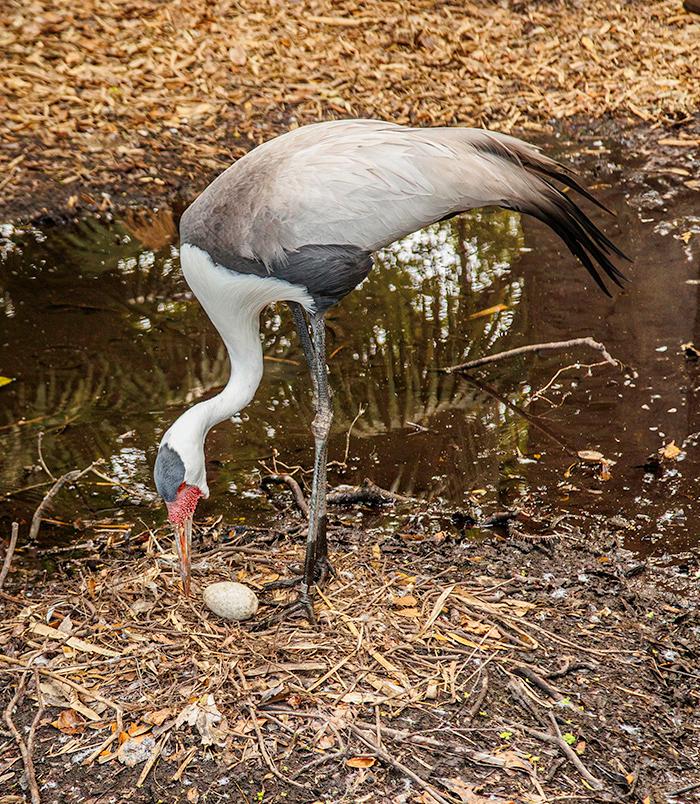
Community And Partnerships
ALI'S PROCEDURE
SUSTAINING ANIMAL WELFARE
CALLS WITH BATS
COFFEE, COMMUNITY, AND BIODIVERSITY



ALI'S PROCEDURE
SUSTAINING ANIMAL WELFARE
CALLS WITH BATS
COFFEE, COMMUNITY, AND BIODIVERSITY

STRATEGIC OPERATIONS TEAM
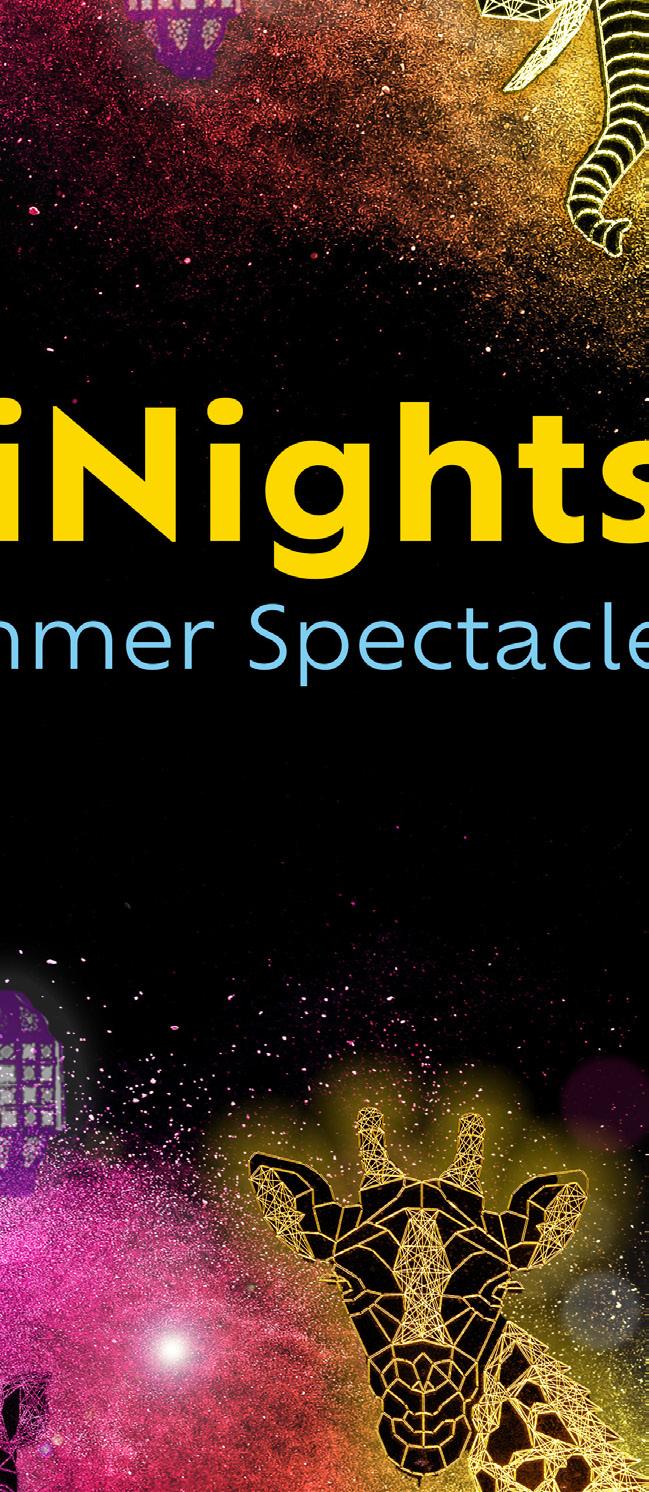
Jeff Ettling, Ph.D., President and CEO
Holly Ellis, Chief Financial Officer
Paula Shields, Chief People and Culture Officer
Nikki Smith, Chief Philanthropy & Marketing Officer
David Hagan, Chief Life Sciences Officer
Chuck Ged, Immediate Past Chair
Anne Marie Cushmac, Vice Chair, Governance
George Mikes, Treasurer/Vice Chair, Finance
Missy Peters, Vice Chair, Community & Culture
Paula Renfro, Vice Chair, Education
Paul Sandler, Vice Chair, Philanthropy
Karen Estella Smith, Vice Chair, Gardens & Art
Kerri Stewart, Vice Chair, Special Projects & Properties
Salmaan Wahidi, Vice Chair, Animal Care, Conservation & Wellness
Kelli O’Leary, Mayoral Appointee (COJ)
Ken Amaro (COJ, Alternate)
Scott Chamberlayne
Kenyonn Demps
Dan Fields
Mike Gay (COJ)
Wilfredo Gonzalez
LeAnna Gutiérrez Cumber
René Kurzius
Barnwell Lane
Pamela
Clint
Param
Joel Swanson Scott
CHAIRS COUNCIL
Martha Baker
J.F. Bryan
Carl Cannon
Howard Coker
Charles Commander
Jed Davis
Matt Fairbairn
Chuck Ged
Joseph Hixon
J. Michael Hughes
Lewis Lee
David Loeb
Richard Martin
Frank Miller
John A. Mitchell
Thomas Schmidt
Bill Rowe
Carl “Hap” Stewart
James Stockton
Penny Thompson
Courtenay Wilson
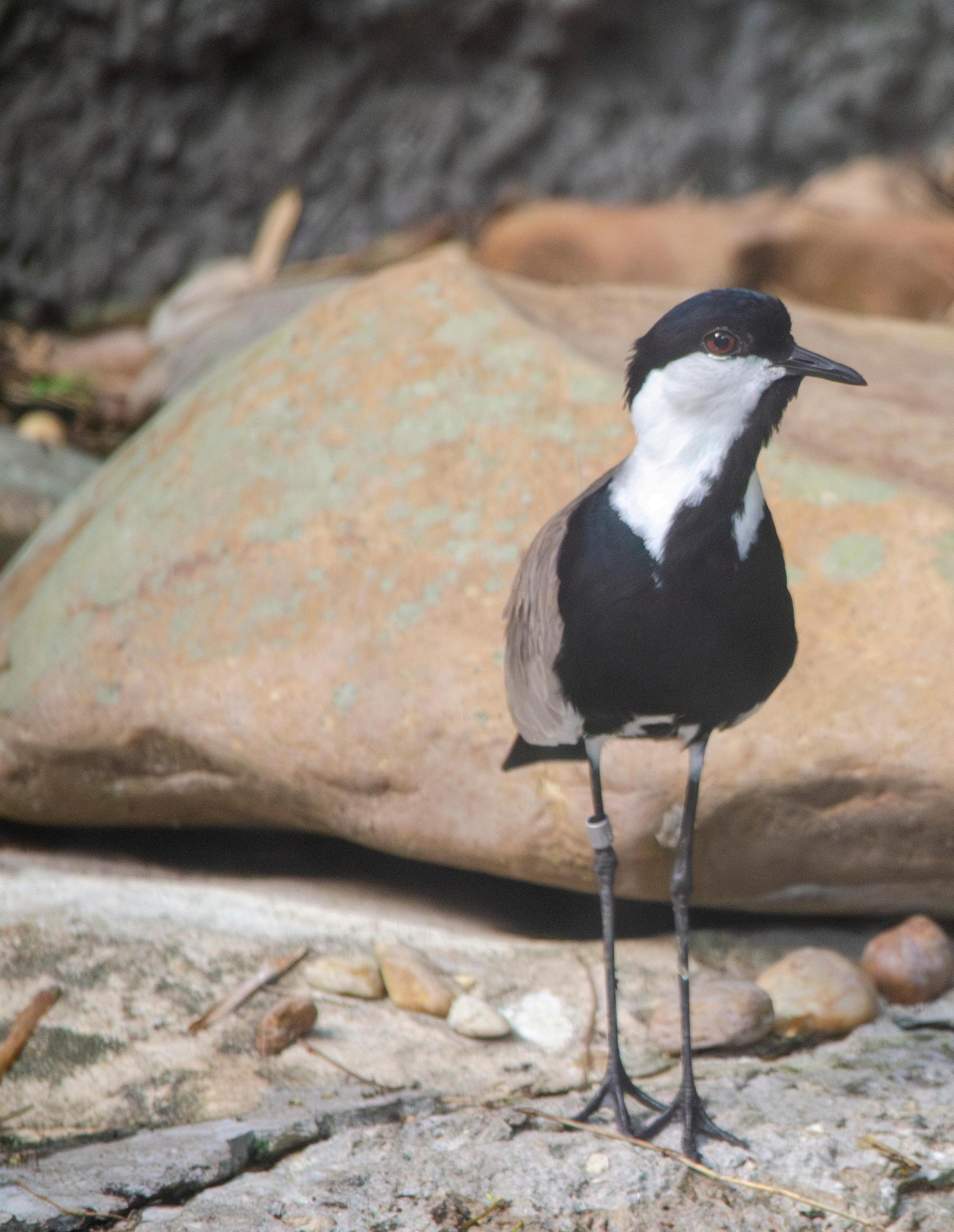
By Donna Bear, Curator of Species Management and Jasmine Alvarado, Species Management Officer
(Vanellus spinosus)

Of the 25 species of lapwings, over half of them inhabit Africa, including the spur-winged lapwing. While their habitat varies, they are almost always close to water, whether it’s ponds, beaches, rivers, marshes or any other source of water. Their diet is diverse and consists of crustaceans, myriapods, insects, spiders, small vertebrates and seeds. Like most lapwings, the spur-winged lapwing uses the “foot-trembling” technique when seeking food. Instead of using their beaks to search, they stomp or tap their feet on the ground, shaking up sand, dirt or leaves to displace any small creatures hiding underneath, making them easier to locate. This species of lapwing has a black crown, chest, wing and tailfeathers, while their neck is white, and their upper wings and back are brown. Males and females each have a spur located on the leading edge (or “elbow”) of both their wings, where the brown and white feathers meet the black ones at the top edge of the wing. They use these spurs mainly for defense against predators or intruders, especially when protecting their chicks. Being precocial, spur-winged lapwing chicks can immediately walk after hatching and already have tiny little spurs that will continue to grow as they do.

(Neurergus kaiseri)
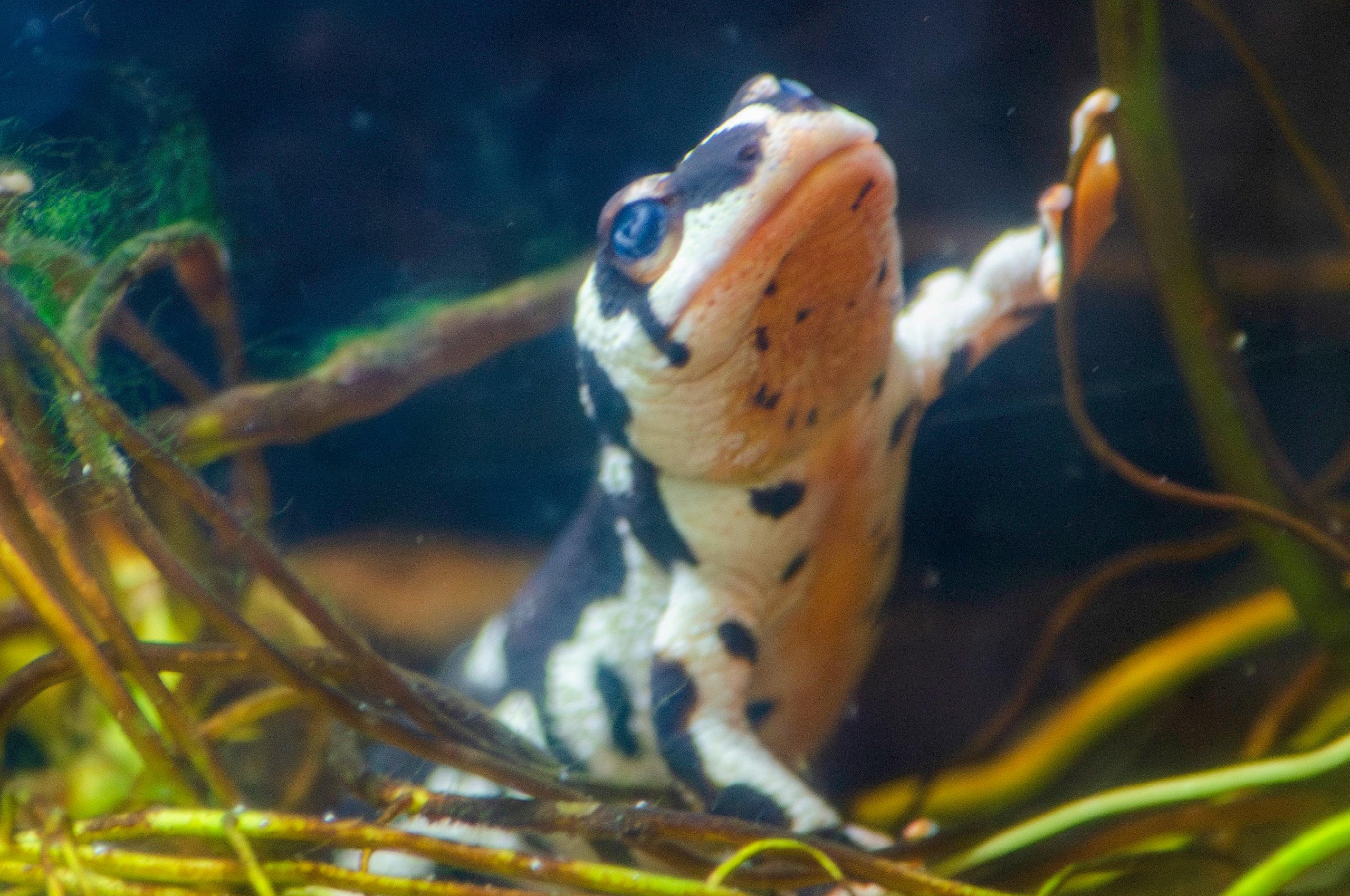
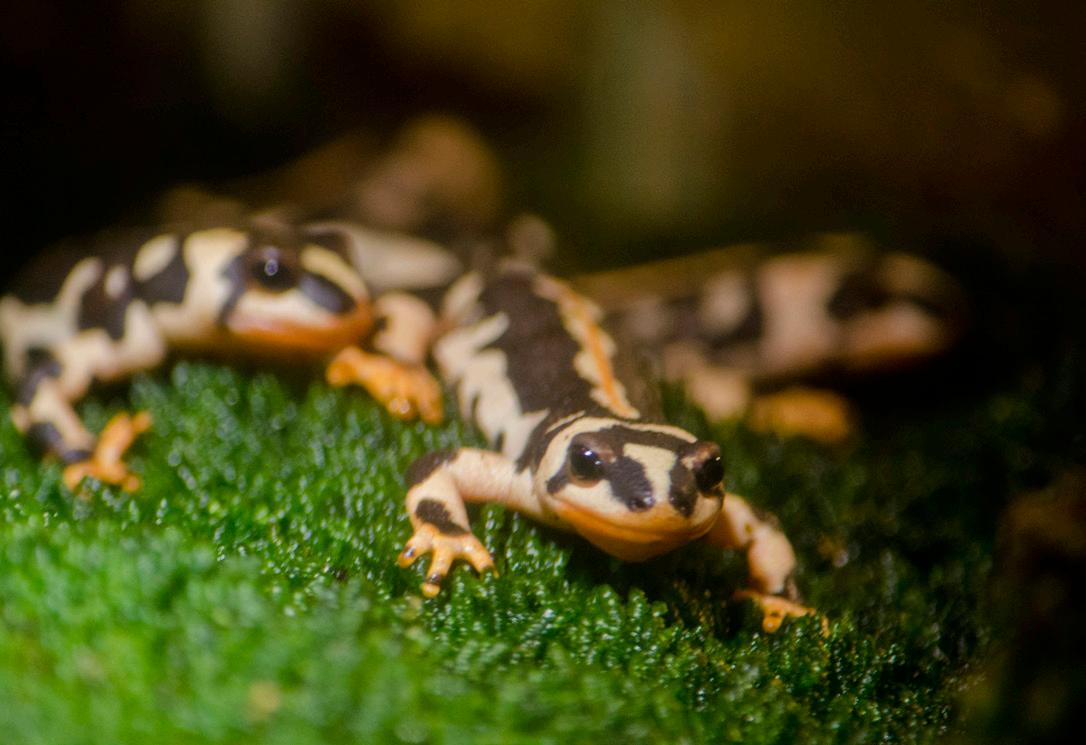
Endemic to the Zagros Mountains of Iran, this species of newt is found only in two streams of the Lorestan and Khuzestan provinces with an estimated wild population of fewer than 1,000 mature individuals. The Kaiser’s newt is listed as vulnerable by the IUCN Red List due to its limited range, habitat loss and extirpation (local extinction due to over collection). Protected by Iranian national legislation, their unique coloring has made them a popular animal in the international pet trade. Adults are mostly black with white markings and spots all along the body. Their legs will be black and reddish-orange or yellow with a similar colored stripe running down from head to tail. As larvae, they are grayish-brown with black spots. Immediately after hatching, they can swim and will feed on small invertebrates such as crustaceans and worms. The larvae undergo metamorphosis between three-to-five months of age, which is when they lose their external gills and the swimming membrane on their tails. They also gain their adult coloring and become mostly terrestrial until they return to the water for breeding. The cycle starts anew when the female deposits her fertilized eggs on rocks in the stream. Visit our vibrant Kaiser’s newts at the Amphibian Conservation Center.

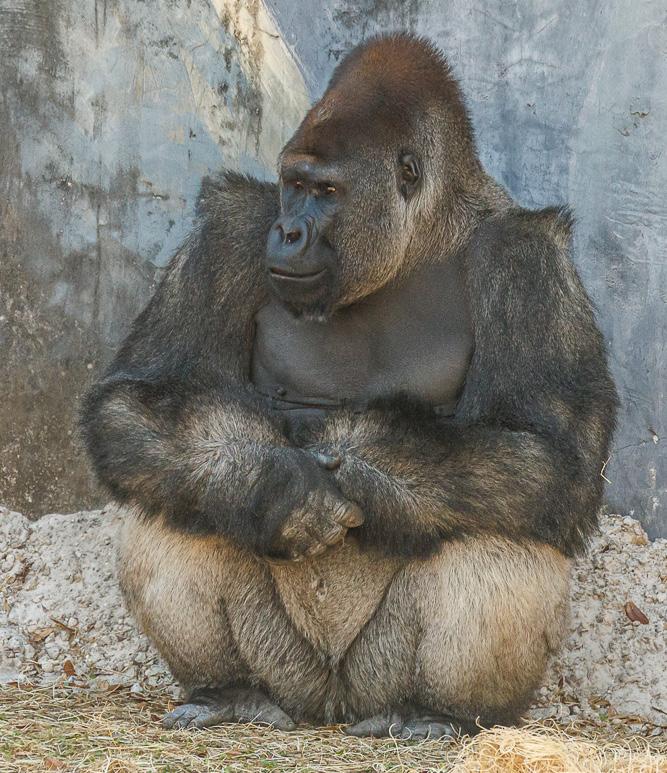
(Gorilla gorilla gorilla)
Here at the Zoo, our oldest gorilla is almost 40 years old and the youngest is now three. In human care, they can live up to 60 years. Gorillas are sexually dimorphic, meaning females and males are distinctly different in their physical appearance, such as size, weight and coloration. Males can grow as large as 500 pounds and almost six feet in height, while females can grow up to 216 pounds and as tall as five feet. The most popular trait a male gorilla has is its coloring, giving it the nickname Silverback . While its face and arms are black, the rest of the body starting at the shoulders will turn grey and become lighter as he grows older. Another physical trait that males have is the sagittal crest, an extended dome-like structure at the top of the gorilla’s head. As their names suggest, the western lowland gorilla live in various lowland forests and swamps in central and western Africa. In the past decade, we have had four gorilla births, giving this endangered species a better chance of survival. Visit our gorilla troop in Primate Forest as they play, learn and grow.

Births & Hatches
Legend: 0.1.2
First
Holly Ellis Chief Financial Officer

long have you worked at the Zoo?
This December, I will have worked at the Zoo for 30 years. I have overseen the Finance team, since the start, and have had the opportunity to lead many teams during my tenure, including Education, Construction and Human Resources. Currently, I lead the Finance/Accounting, Information Technology, Campus Management and Business Operation teams.
What were your previous jobs/career paths and how did they lead you here?
Before I worked at the Zoo, I was a Certified Public Accountant working for KPMG in public accounting as an auditor. I worked in that industry for four years in Norfolk, Virginia focusing on construction contractors, government contractors, city governments and retirement plans. When I moved from Norfolk to Jacksonville, KPMG was the audit firm for the Zoo, and they knew that the Zoo was looking to hire an accountant with construction/ government experience, since they were just starting the redevelopment of the entire Zoo campus. I was ready to get out of public accounting, so I applied for the job. And here I am, 30 years later.
What does a day in your shoes look like?
My day usually never goes as planned. I spend a lot of time meeting with different teams and staff members— lots of problem solving, guidance and teamwork. I have never been bored at the Zoo!
What is your favorite animal?
While I really love all the animals at the Zoo, I am partial to the big cats with jaguars and tigers being my favorites.
What is your favorite exhibit?
My favorite exhibit is Range of the Jaguar. It is such a special place, especially for night events. Land of the Tiger is also a favorite, and I love to see the tigers enjoying the water.

When or how did you first develop an interest in animals/the zoo world/education?
I enjoyed visiting zoos and aquariums even as a child, and I am thrilled that I have been able to use my skills to help the Zoo further its mission. I love being part of this mission-based conservation organization!
Are you native to Florida? If so, where? If not, where did you grow up?
I grew up outside of Atlanta, Georgia in a small town called Oxford, Georgia. I grew up in the country where you didn’t lock your doors, and my siblings and I were always outside. I went to college at the University of Georgia, where I earned my Bachelor in Business Administration in Accounting. I moved to Norfolk, Virginia right after college, where I worked in public accounting until I moved to Jacksonville in October 1994. I’ve lived here longer than anywhere else, and I consider Jacksonville my home.
What is your favorite part of your career or what is your most memorable experience at the Zoo (or your old zoo)?
I really love all the different people I have met and worked with over the years, along with being a part of the continual improvements at the Zoo. The entire Zoo campus has changed from when I started, and I am so proud of the growth and evolution of the entire organization. We continue to get better and better, and I am consistently awed by the amazing staff that work at the Zoo.
What do you like to do in your free time?
In my free time, I love to watch movies, play video games with my husband, visit with my two daughters and their husbands in Orlando and travel. My husband and I love visiting national parks, which are phenomenal, going on cruises and going to Disney.

By Alexis Rosa, Browse Program Technician




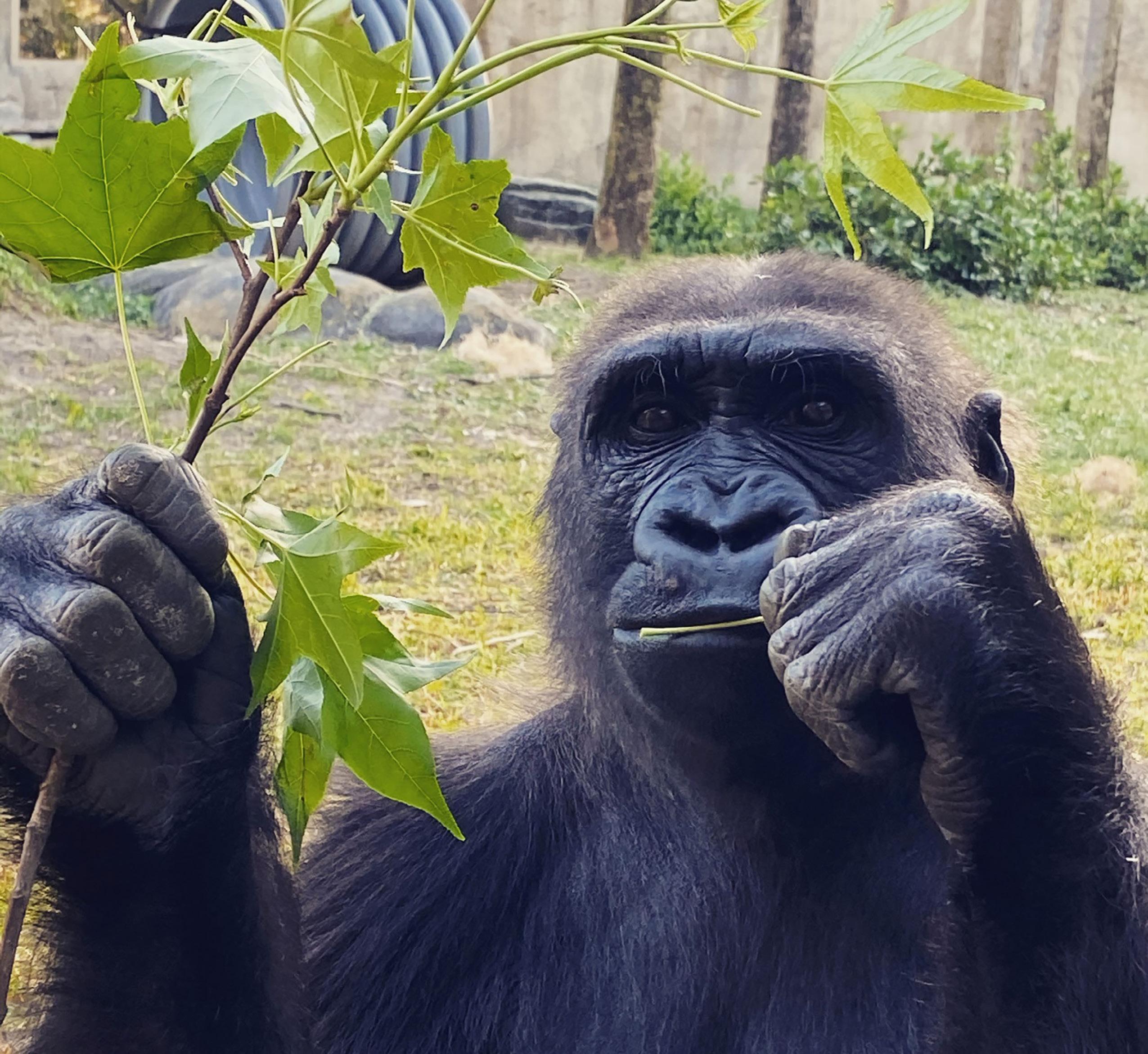

“Browse refers to the plant material provided to the animals for enrichment. It encourages natural foraging behaviors and is an important source of nutrition in the diet of many herbivores and omnivores.”

Browse refers to the plant material provided to the animals for enrichment. It encourages natural foraging behaviors and is an important source of nutrition in the diet of many herbivores and omnivores. It is especially important for elephants because woody plant material is critical to their dental and gastrointestinal health, making them the biggest consumers of browse. It takes a significant amount of time and effort to harvest enough for the health and wellbeing of the animals. While there is a team of dedicated staff to put in the work, it takes a collective effort from the whole community to collect browse. This is because it is difficult to source and is not always readily available.
We source browse by partnering with private, corporate and government landowners that allow our staff to forage for browse on their acreage. Private residents can also donate their tree trimmings from approved plants to the Zoo if they are free of pesticides. These community partnerships are critical to the Browse Program; however, land development threatens many sources of browse. Fortunately, one of our corporate partners is working to secure the future of the Browse Program.
This patron is going to help the Zoo start a Browse Farm. They are going to grow browse plants on a 1.5-acre plot of their farmland. That’s enough space to grow over five hundred wax myrtle shrubs!

Their team will use their farming equipment to plant saplings and maintain them as they grow. The company has even offered to help cover some of the cost of the plants. If this first plot is successful, there is the possibility of planting more browse on the farm’s other fallow plots.
In essence, the Browse Program at Jacksonville Zoo and Gardens embodies the power of collaboration, innovation and community stewardship in safeguarding the welfare of managed wildlife. Through initiatives like the Browse Farm, the Zoo and its partners not only enrich the lives of their animal residents but also inspire a deeper appreciation for the interconnectedness of all living beings.

By Donna Bear, Curator of Species Management
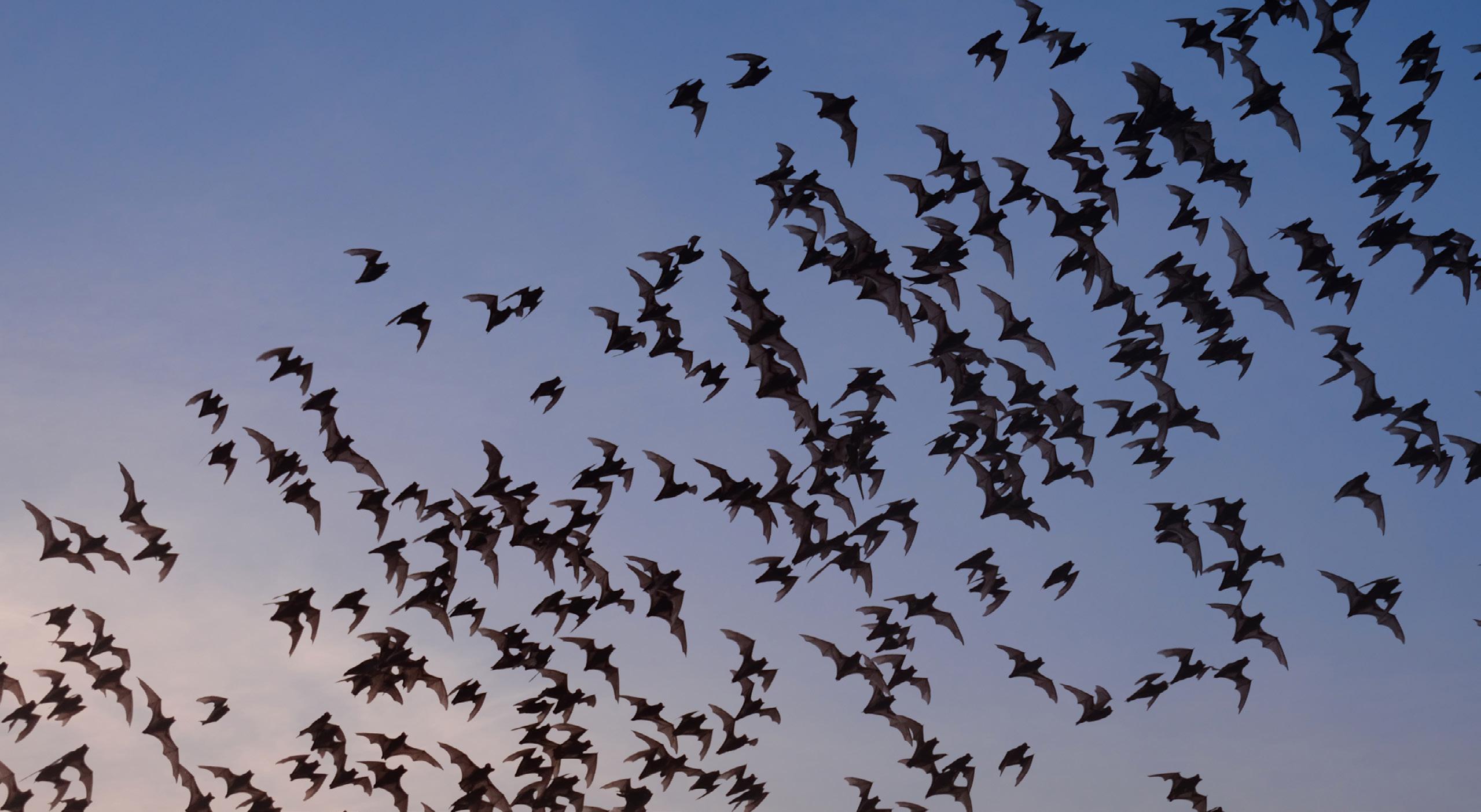

Florida is home to 13 species of bats that use widely varied environments. Since 2006, a fungus known as whitenose syndrome (WNS) has spread across North America and decimated populations by disrupting hibernation in the winter months causing starvation. As massive declines occurred across the country, acoustic monitoring to find habitats and environments where the bats were surviving began. Acoustic monitoring involves “listening to” and recording bat calls to find species in an area. Specialized recorders are used that can detect the echolocation frequency of bats. The recorded calls are run through a program that analyzes the calls and determines the species while giving researchers a visual analysis of the call. This system for monitoring bats is passive and noninvasive.
While you can’t tell numbers with this process, you can decide species or species groups in an area without handling the animals.
Florida is the only state in the Southeast not impacted by white-nose syndrome. When Georgia and Alabama became positive states, the Florida Fish and Wildlife Conservation Commission (FWC) realized that Florida needed more baseline data on bat species diversity and how bats use our varied environments. Collecting this data now will allow biologists to know where to focus efforts if white-nose syndrome does occur in Florida. Data like this also allows biologists and regulators to focus conservation efforts in areas that have the most need based on diversity and habitat use.
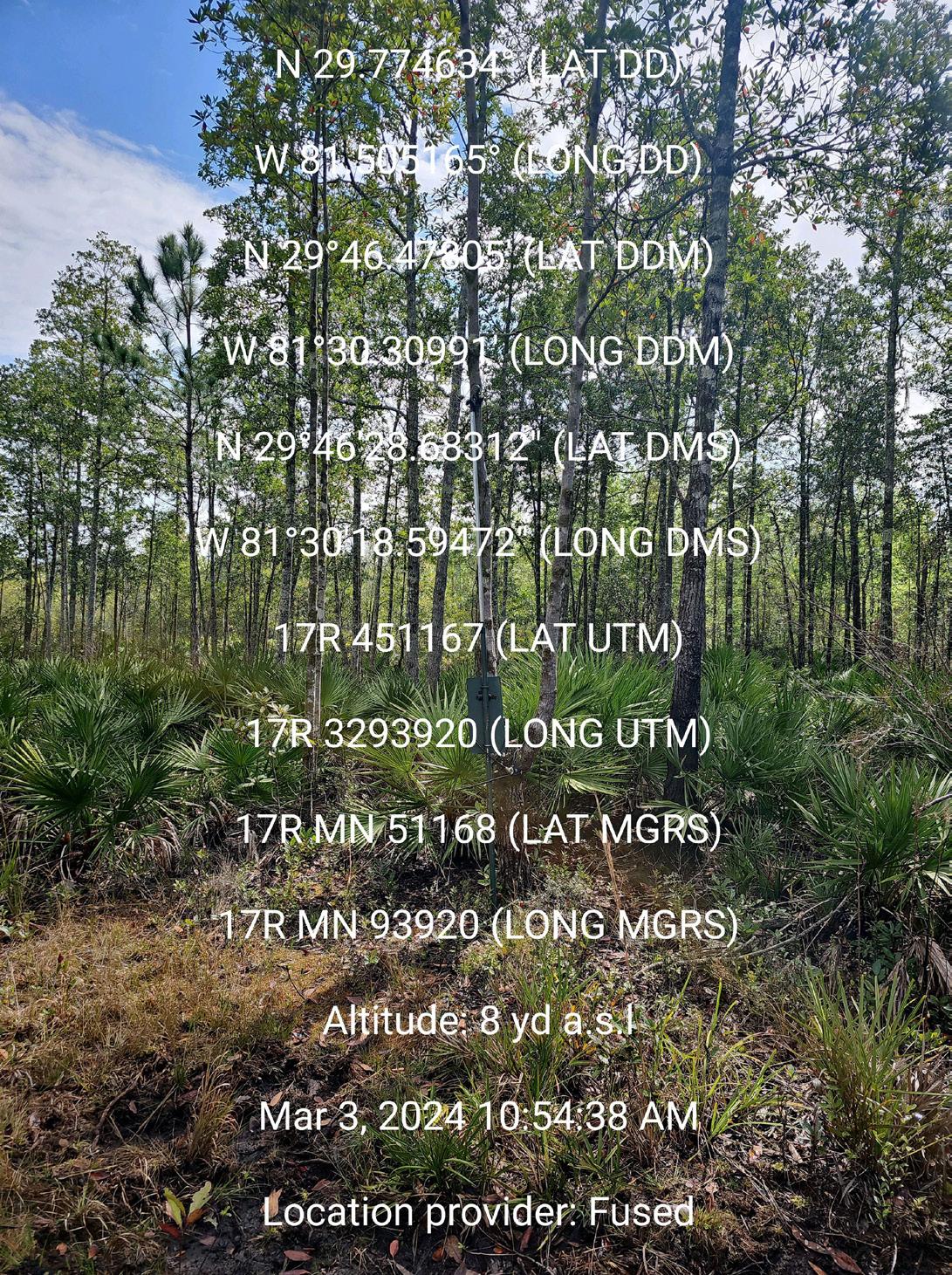

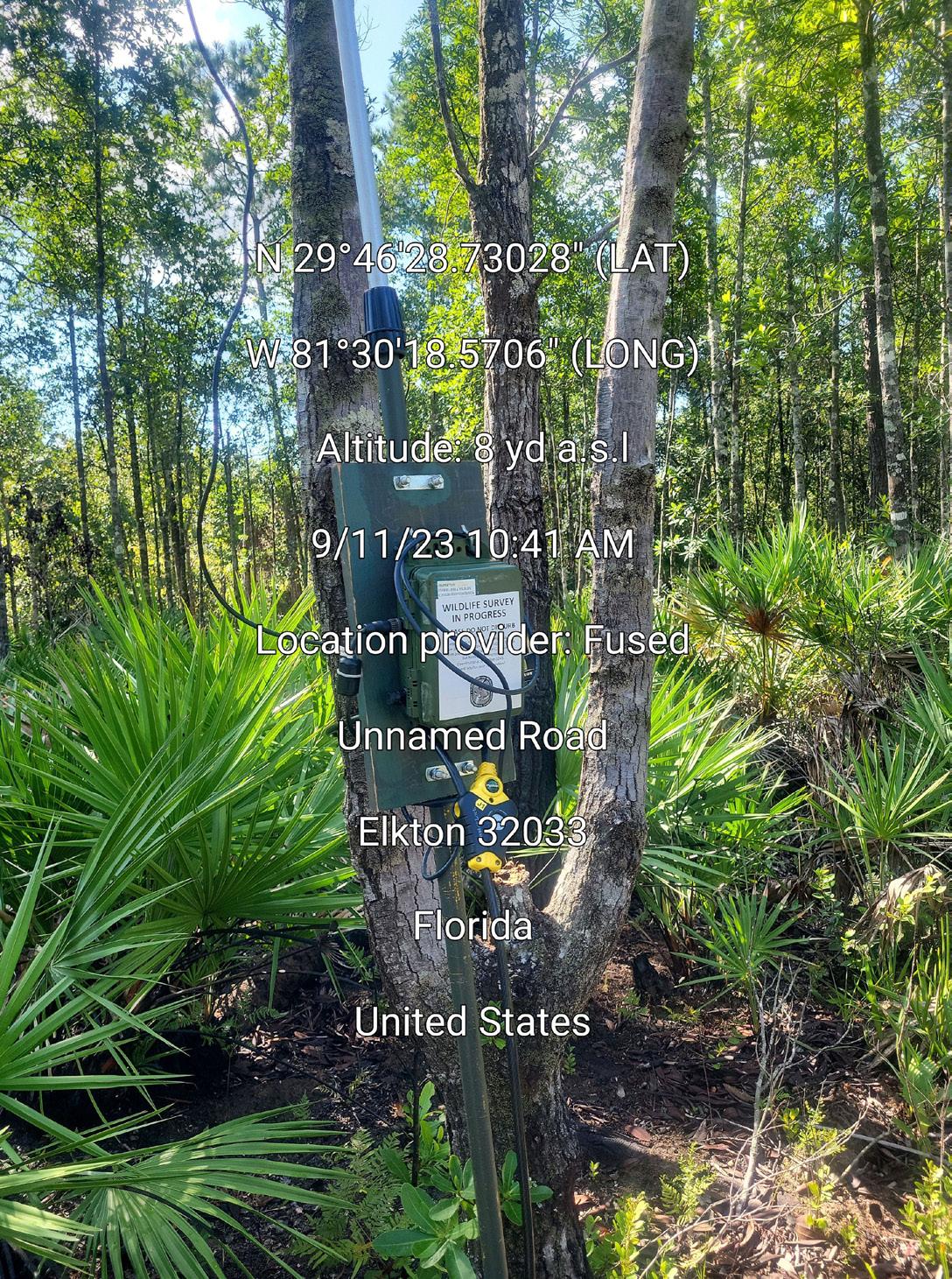
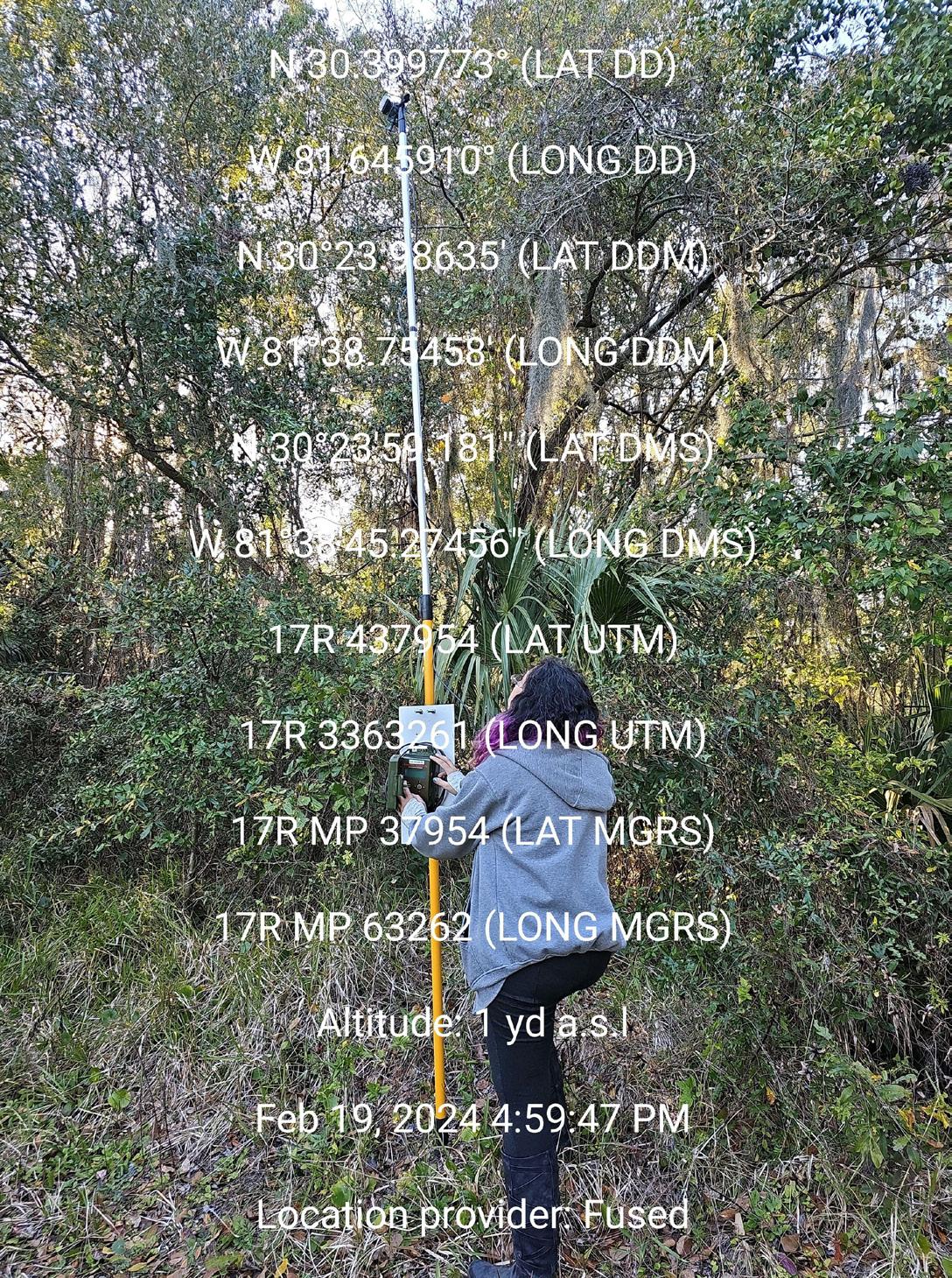
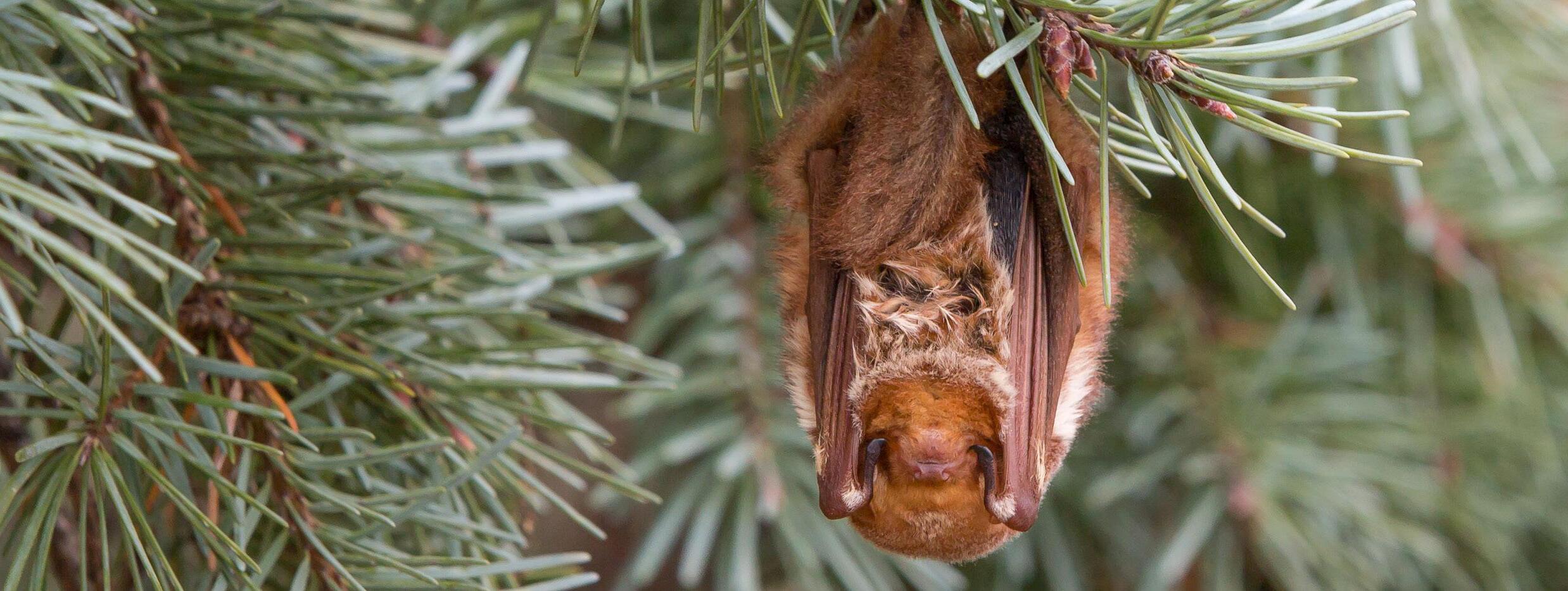
In 2019, the FWC began the Florida Long-term Bat Monitoring Program (FLTBMP) to find what habitats are most used throughout the year by native bats. The survey method used follows a national monitoring protocol that involves setting out detectors in adjacent 10 km by 10 km grid areas for a minimum of four consecutive nights every quarter, and then analyzing the calls recorded. The FWC asked the Zoo and Bacardi Bottling Company to partner with them as in-kind donors for the FLTBMP project. As partners, the Zoo and Bacardi have been taking part in bat monitoring quarterly since 2019. White Oak Conservation Center joined our schedule in early 2020. The Zoo gives all the recorded data to FWC who then analyzes it and sends the data to the North American Bat (NABat) Database.
By 2022, the collaboration grew. FWC reached out at the annual Florida Bat Working Group (FLBWG) meeting about covering several stationary setups in Northeast Florida that no longer had deployment coverage. We agreed to collaborate with the St. Johns River Management, Clay County Parks and Recreation and Saturiwa to deploy to the seven other sites needing coverage in St. Johns and Clay County.
In the last three years, the collaboration with FWC has included 57 monitoring nights with 9,277 calls recorded at the Zoo alone. Seven species or groups have been recorded at the Zoo, Bacardi and White Oak Conservation Center in different densities. We continue to take part in this monitoring program and hope to expand our involvement with more collaborations in the future.
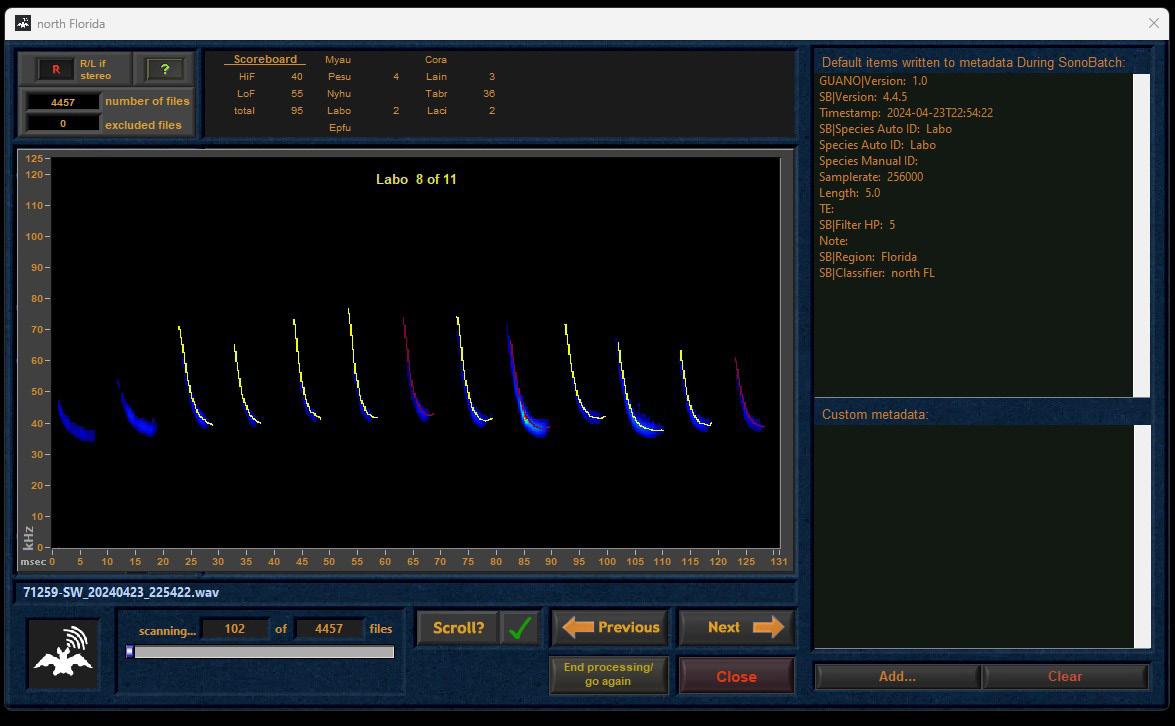
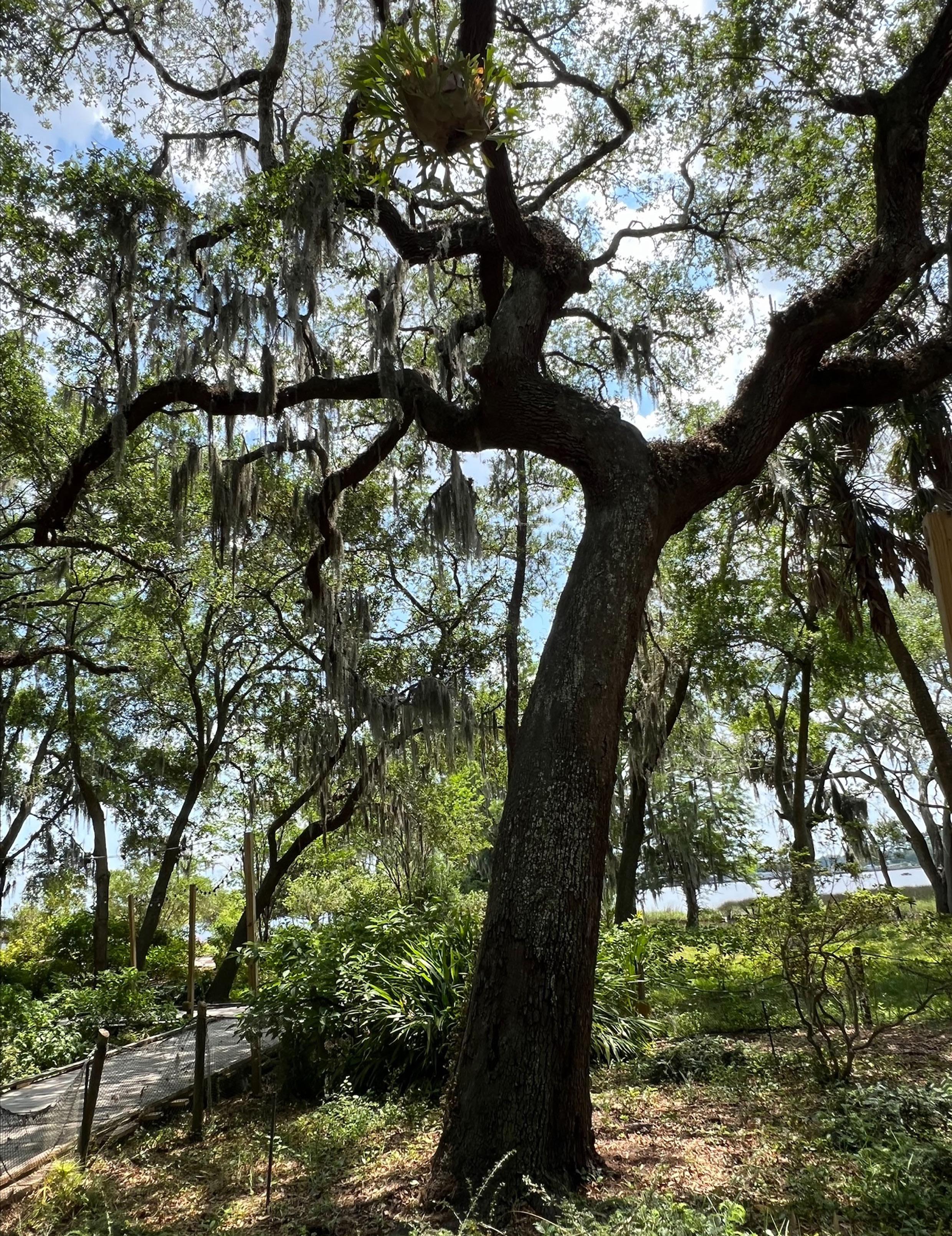
We invite you to become a guardian of nature by naming one of our beautiful Live Oak legacy trees near Asian Bamboo Garden. These exceptional specimens, standing for over a century with a diameter of 24 inches or greater, are integral to our landscape and history. Your donation not only honors their resilience and beauty but also ensures their protection from being cut down, preserving their legacy for future generations. Your tree will be registered with the live oak database to ensure its protection. With flexible 5-year pledge payments available, this is a gift that lives on year after year. Reach out to Brenna Blake, our Senior Philanthropy Officer, to learn more and join us in safeguarding our natural heritage.

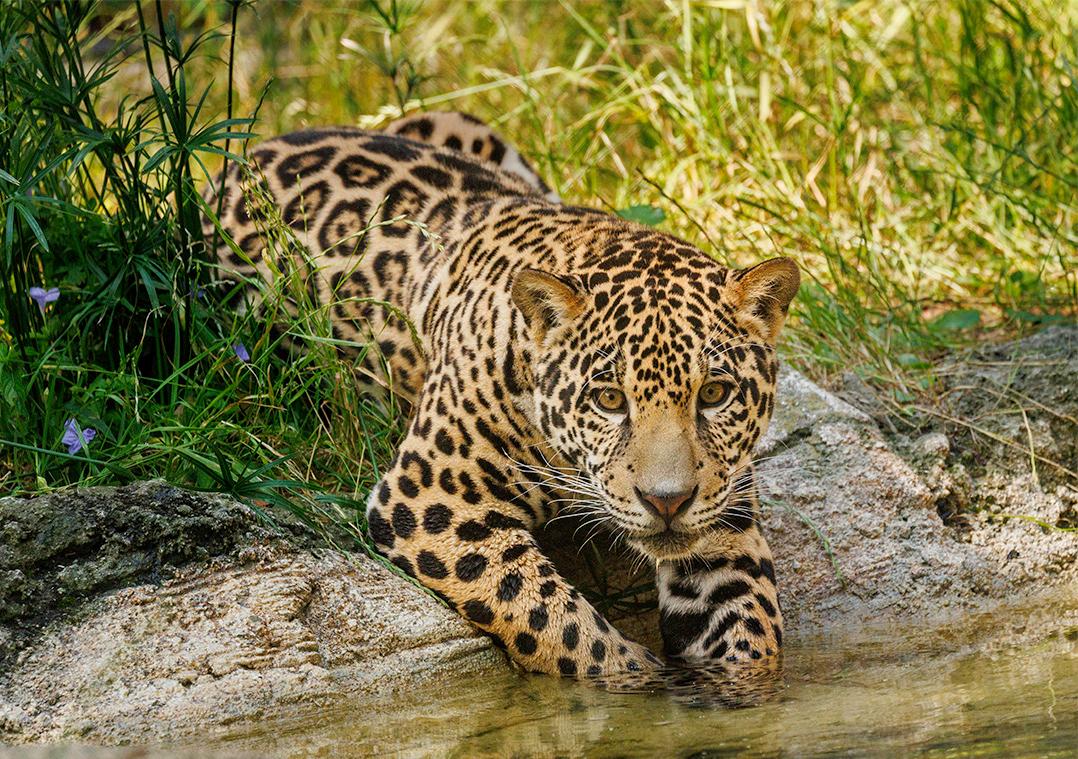

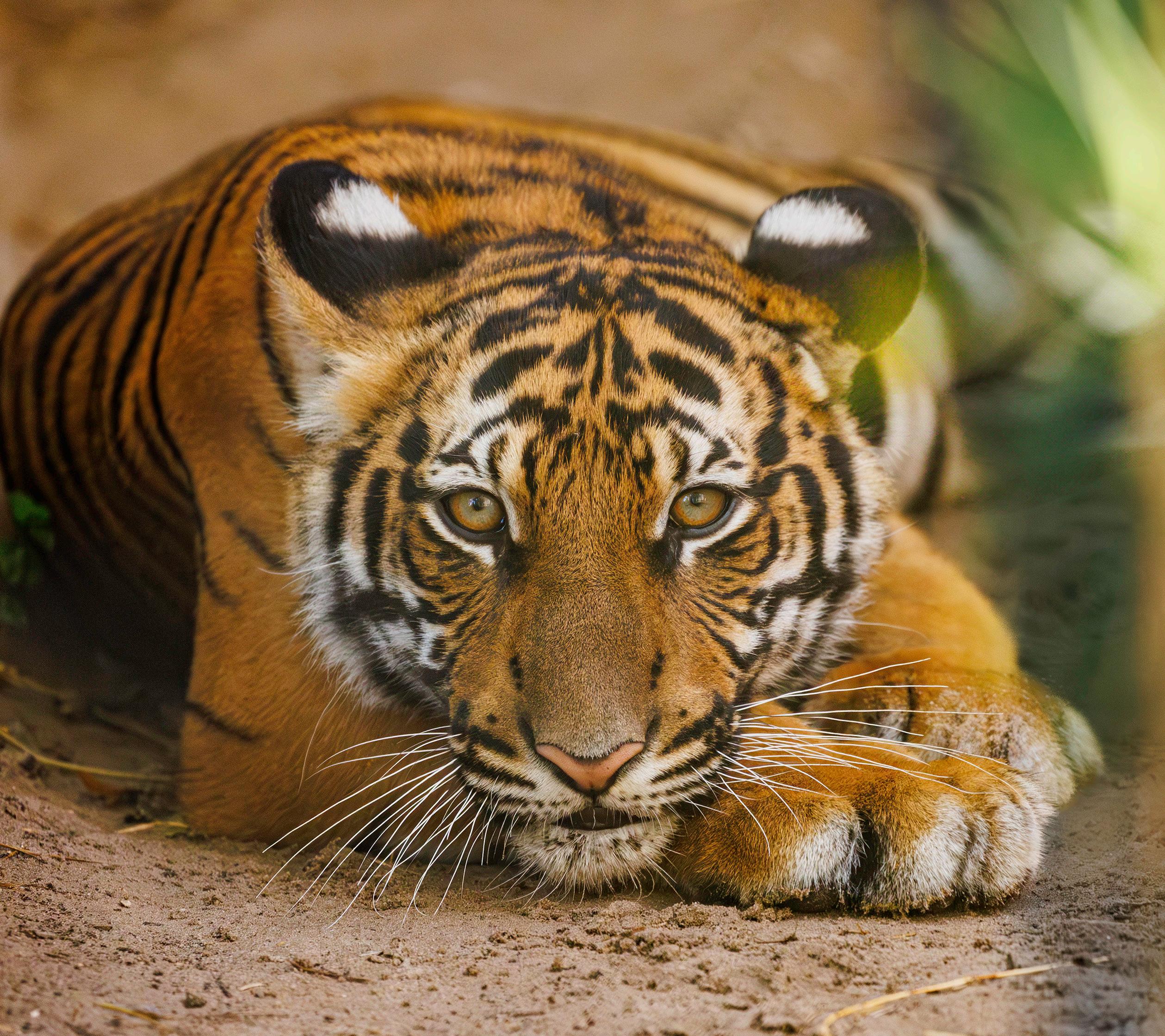
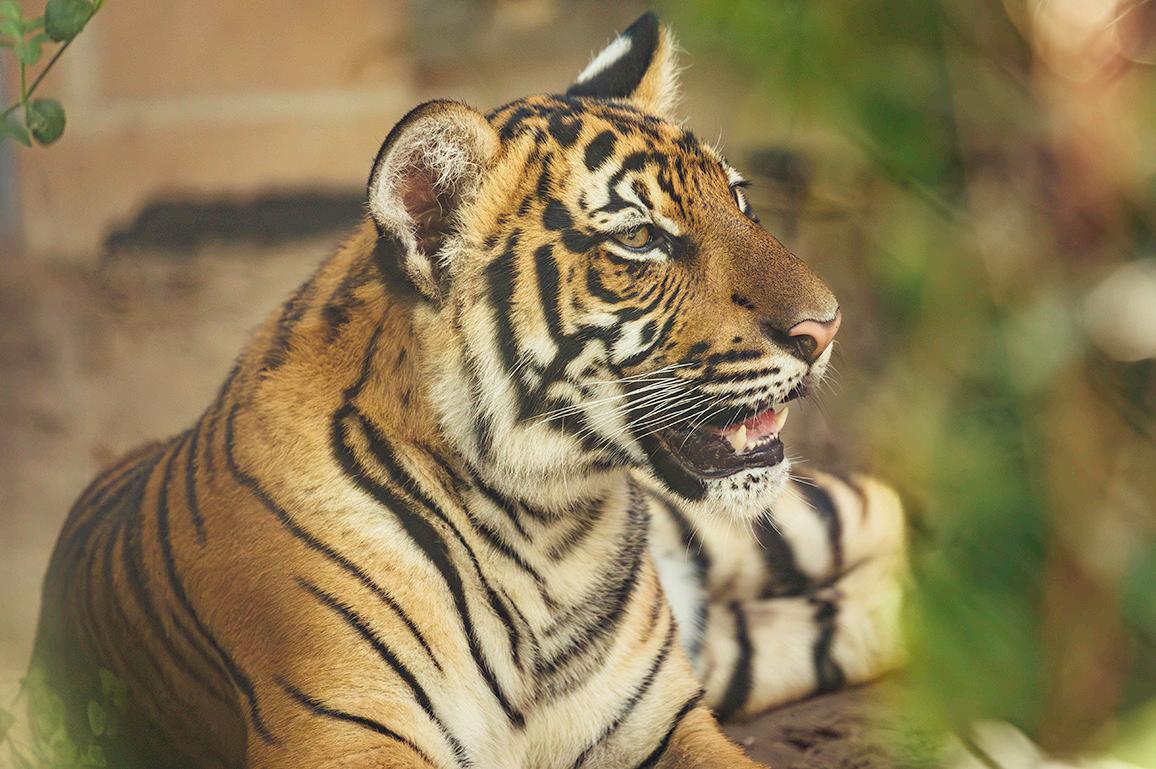
Eastern Bongo born April 20, 2024
Jaguar, Banks, born April 7, 2023
Malayan Tiger, Mina, born November 5, 2023
All animals are in the AZA Species Survival Plan
By Houston Sneed, Plant Conservation Officer

“Coffee grown in full sun may produce more coffee beans, but it comes at a heavy cost to the environment and coffee producing communities.”

Around the globe, coffee growing regions have suffered from canopy loss. This is due primarily to the transition from growing coffee under the shade of a forest to full sun coffee where trees are removed to industrialize the farms for increased production. This change started in the 1970s when companies pushed coffee farmers to produce more coffee to keep up with the growing global demand. Coffee grown in full sun may produce more coffee beans, but it comes at a heavy cost to the environment and coffee producing communities. Without tree cover, farmers use more fertilizers and pesticides, which pollute local water. The lack of tree roots leads to landslides, and native species lose their habitats.

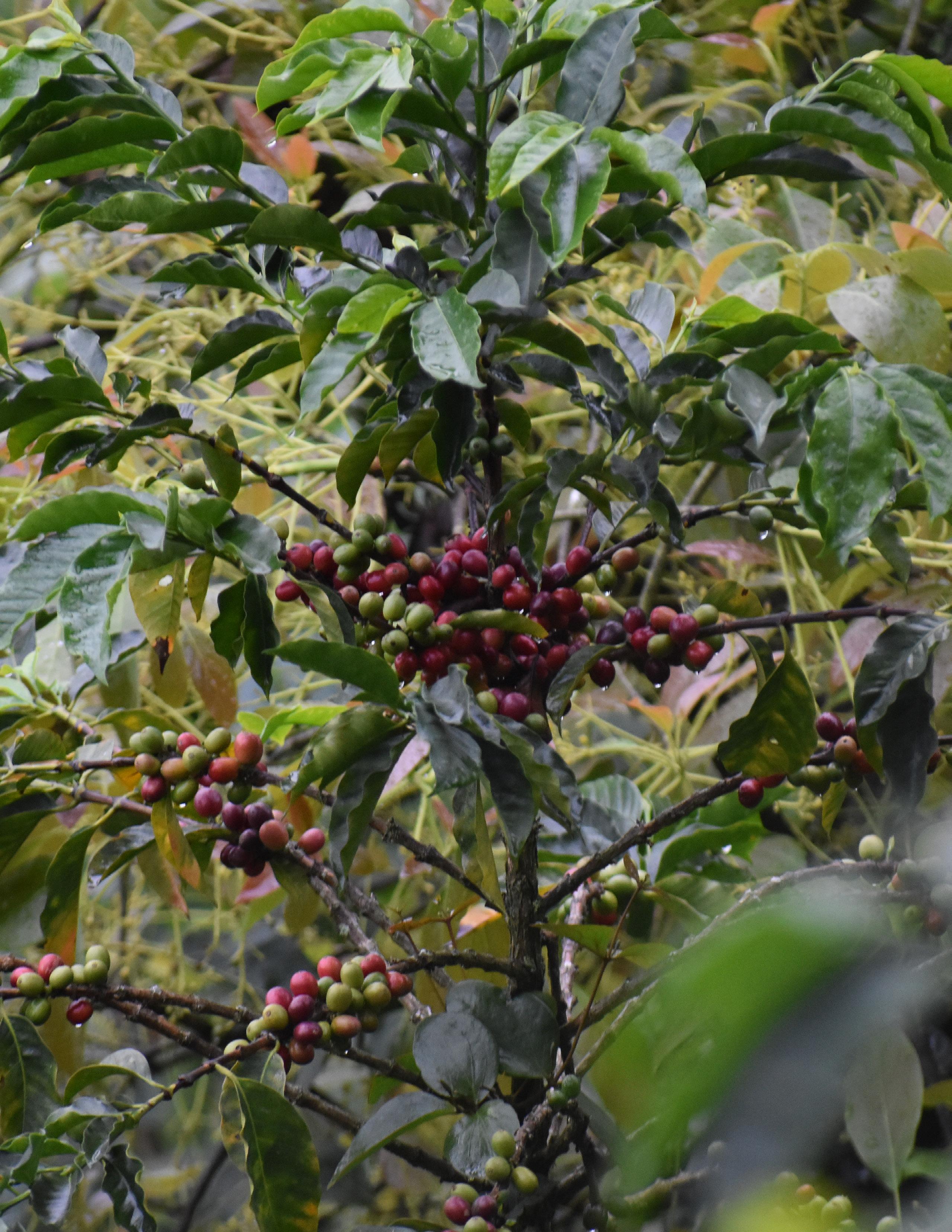
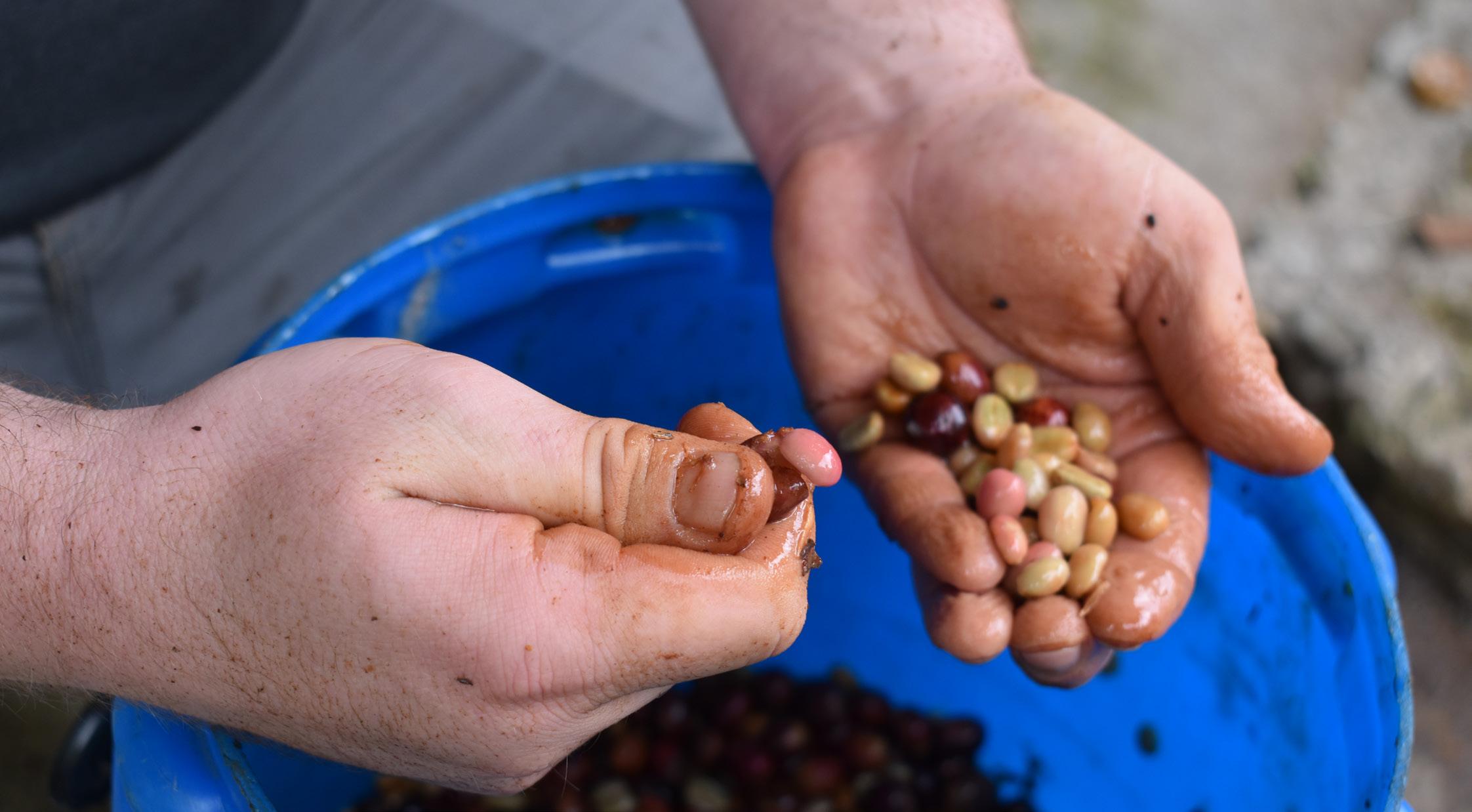
Coffee growing regions are some of the most biodiverse landscapes on the planet, and their rich forests are important for the preservation of biodiversity. In partnership with local shop Bold Bean Coffee Roasters, we met with a Columbian coffee producer. This connection fostered the development of a community-led project to help coffee farmers of the Association of Differentiated Coffee Growers of Northern Tolima make strides towards producing not only better coffee, but also restore tree cover in the community. Earlier this year, we traveled to this community in South America to build a plant nursery. This nursery will grow coffee plants to provide the community with varieties of coffee that are desirable to the specialty market. This will help increase the income on these farms and allow them to plan for more sustainable farming practices. The nursery will also produce native shade trees and other plants to distribute with the coffee plants to encourage the restoration of functional forest in the community.
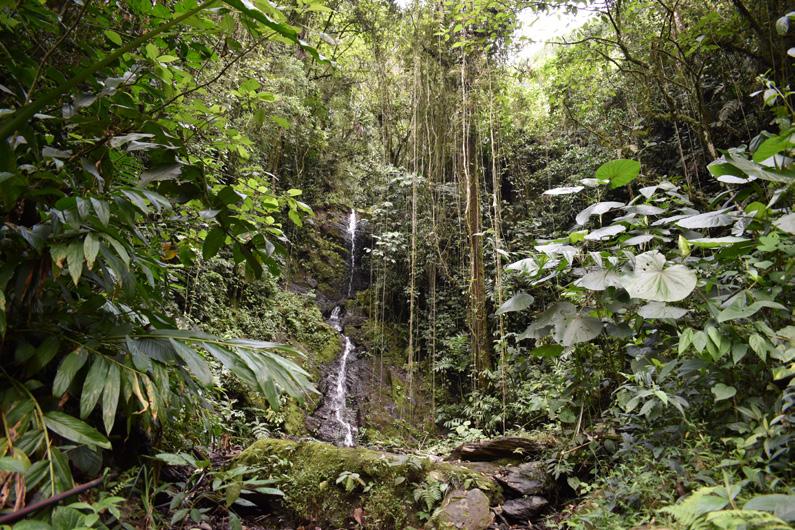
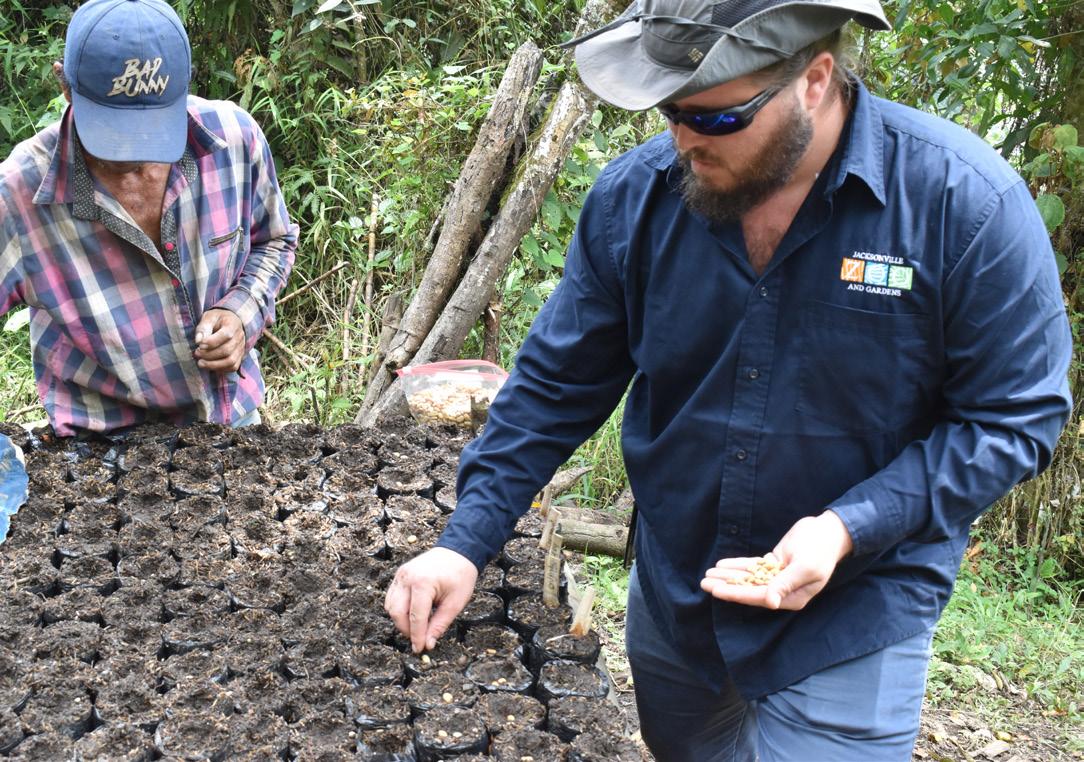
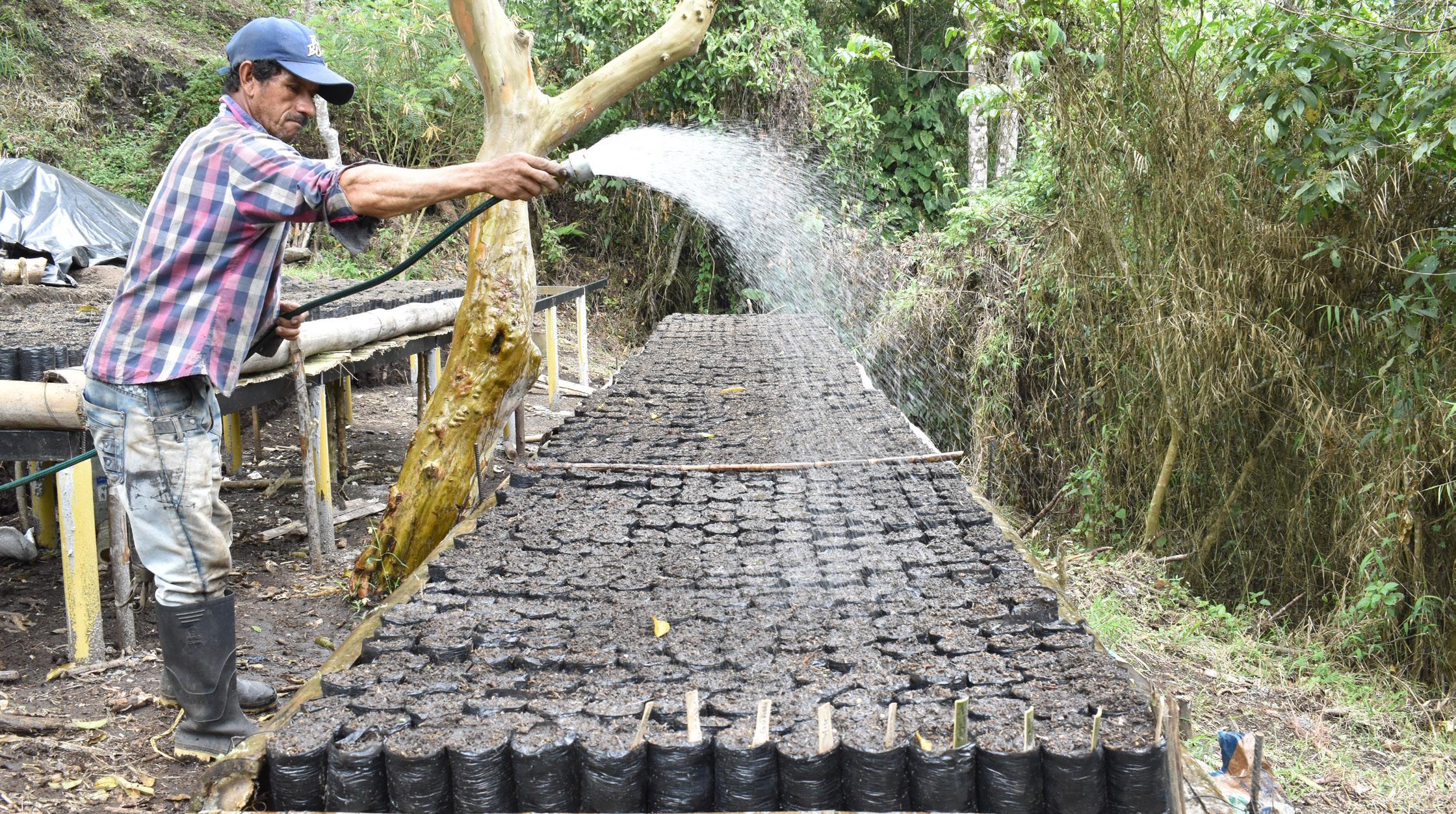
This is a long-term project, and this is just the first step. We hope to continue building meaningful relationships with this community of coffee producers. By listening to their needs and letting them lead the project, the Zoo hopes to work alongside this community to discover sustainable solutions for their farming practices and increase available habitat to the native species of the Colombian Andes
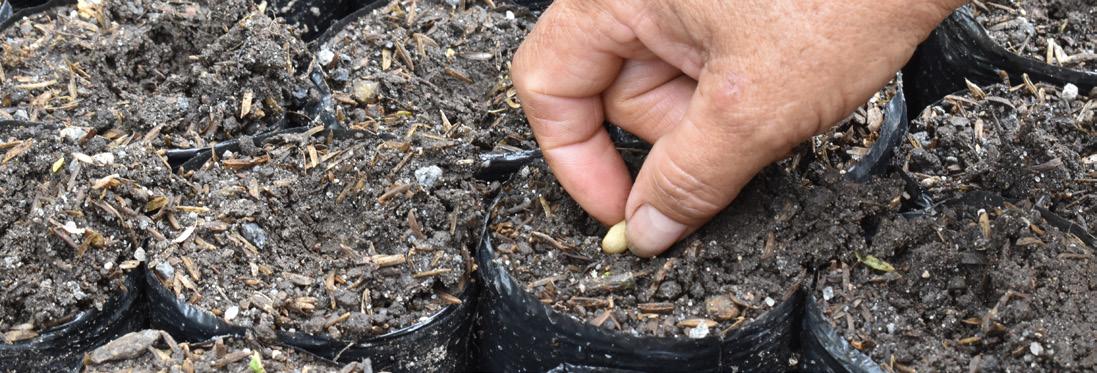

Mountains. Interestingly, migratory bird species that fly through our backyards here in Jacksonville spend part of their migratory lives on coffee farms in Colombia. By supporting this community of coffee farmers, we will also support the biodiversity here in our own backyards!


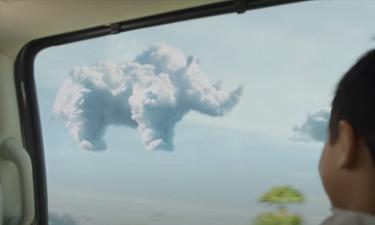
Adventure is Closer Than You Think
There's Only One Place Where You Can Really Go Wild


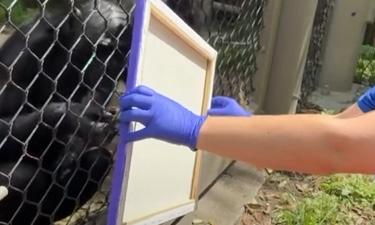
Oldest Southern White Rhino Needs Surgery
Sound on for chuffs, hisses and growls
Bonobos Love to Paint!
To see additional videos please visit our YouTube Channel

Interactive fun creates a curiosity for learning. As Nature Agents, you can discover, learn and bond together on a digital scavenger hunt using the NEW Explorer Quest app!


DOWNLOAD EXPLORER QUEST
APP MANUALLY OR SCAN
By Dr. Meredith Persky


In an enormous effort to provide the utmost care for one of Jacksonville Zoo and Garden’s African elephants, 34-year-old Ali, a collaborative team of nearly 30 experts from around the world came together to perform a specialized dental surgery to remove the remaining portion of his damaged right tusk.
Ali had previously undergone tusk procedures in 2019 and 2023, but due to the complex anatomy, the large tusk size and the anesthetic time constraints on such a large patient, a multi-phased treatment approach was required. With the remaining portion posing a risk of infection, pain and potential harm, the decision was made to conduct surgery once again in the hopes of removing it entirely to ensure the elephant's long-term health and wellbeing. After the three-and-ahalf-hour procedure, the remaining tusk was successfully removed.
At eleven thousand pounds, Ali’s size adds a layer of complexity, necessitating the use of elongated dental tools, modified anesthetic equipment and a team of skilled care takers and medical professionals to ensure a successful procedure. Approximately 30 veterinarians and veterinary technicians monitored Ali’s vital signs, while an additional 30 plus team members from animal care, facilities and more participated in essential roles.
The procedure involved meticulous planning and coordination among animal health, animal care and specialists in veterinary medicine. Members of the Animal Health team worked for six months planning the medical supplies and specific needs for this procedure. Elephant Care Specialists conducted training sessions with Ali to ensure proper positioning for the surgery.
Esteemed wildlife veterinarians, Dr. Gerhard Steenkamp, lead dental surgeon, and Dr. Adrian Tordiffe, anesthetic team lead, travelled from South Africa and India, respectively, to collaborate with a team of 16 other veterinarians, eight veterinary technicians, and our Elephant Care Specialists for this challenging case. Dr. Mike Lowder, a well-respected equine veterinary dentist, assisted Dr. Steenkamp with the intricate dental operation. Additional world renown veterinarians including anesthesiologist Dr. James Bailey of Innovative Veterinary Medicine, Inc. a Jacksonville, Florida company, and Dr. Jeff Zuba of In Case of Anesthesia, Zoo and Wildlife Consultant, and inventor of the ventilation unit created to provide breathing support for large animals when placed under anesthesia, such as Ali, helped guide the veterinary medical team.
We are beyond grateful and honored to have had virtually all the world’s experts in elephant anesthesia in attendance for this monumental procedure. Our incredible Elephant Care Specialists and veterinary colleagues from around the world worked together flawlessly to provide the ivory tower of medicine for Ali. He has recovered well and can be seen at the Elephant Plaza habitat on most afternoons.
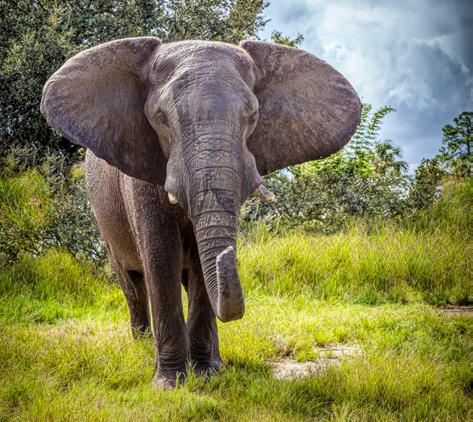
By Jamie Lynn Lankenau, Community Engagement Supervisor
Jacksonville Zoo and Gardens hosted the City Nature Challenge for the third year in a row this April. It's a friendly competition between cities around the world over a four-day period to engage as many community members as possible to get outside through identifying wildlife and contributing to scientific data using the iNaturalist app. The web-based app promotes sharing biodiversity between community members by contributing photos of wildlife. The app includes crowd sourced species identification, and these identifications are used by researchers to study different species, update distribution ranges and determine population health. In Florida, these identifications can help us track native versus invasive species.
City Nature Challenge’s winning city for the past two years worldwide has been in South America, with San Antonio, TX and San Franciso, CA being the top cities in the US in 2024. The Zoo, along with our community partners, aim to put Northeast Florida on the map by growing our involvement of the City Nature Challenge each year, with 2024 being the most involvement we’ve had so far!

Community Partners that incorporated City Nature Challenge into various environmental events around Northeast Florida over the weekend of April 26 through April 29 included the Ixia Native Plants Society Chapter, the Sierra Club, National Parks Conservation Association, National Park Service (NPS), Timucuan Parks Foundation, City of Jacksonville Parks, Duval Audubon Society, UNF’s Institute of Environmental Research and Education, MOSH, St. Johns Riverkeeper, White Oak Conservation Center and Tree Hill Nature Center. Events included a kayaking trip with Sierra Club participants; World Migratory Bird Day celebration with
NPS, Audubon and more; an art show celebrating Florida biodiversity with Ixia Native Plant Society and the Cork Arts District; and our Education team tabling at the Riverside Arts Market among many more. With the most community partners ever to be a part of Northeast Florida’s City Nature Challenge to date, we collectively got 347 members involved as observers on iNaturalist, clocking 4,915 total observations and 1,257 different species observed!
Stay tuned for ways to get involved in other Community Science efforts with us and our amazing partners by visiting our website. Prepare for next year’s City Nature Challenge by getting familiar with iNaturalist, which can be downloaded and used to identify wildlife all year long!
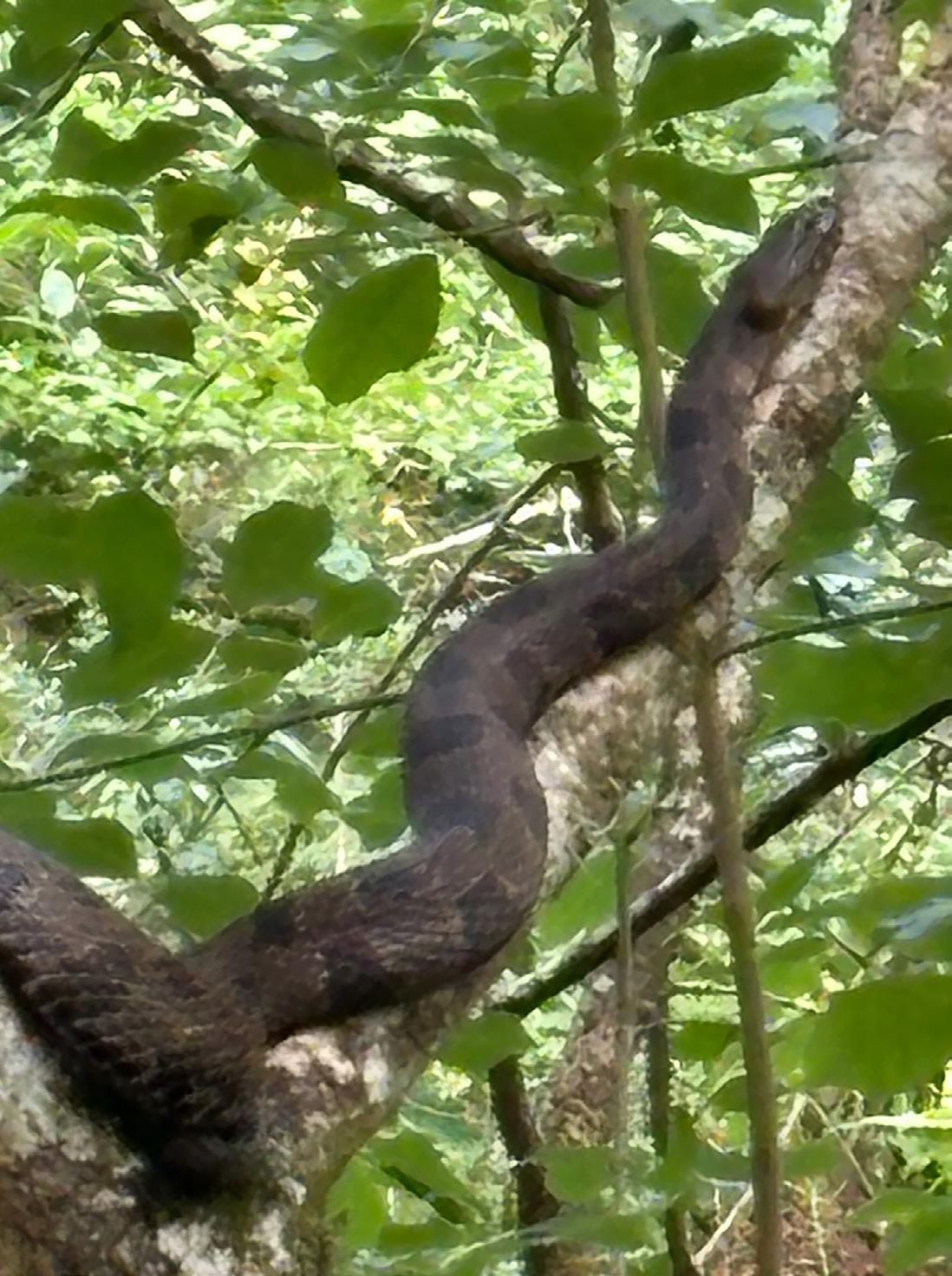
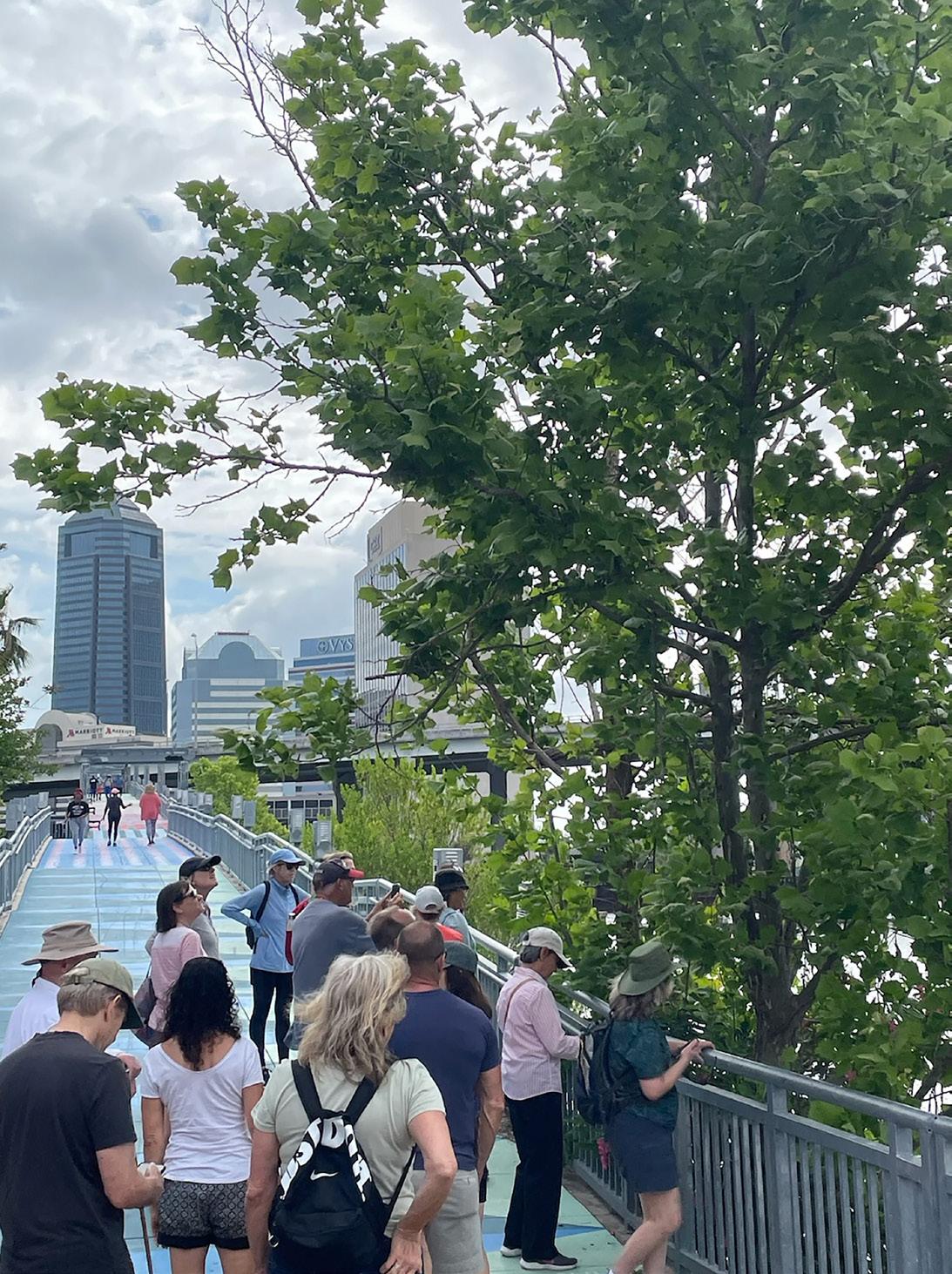
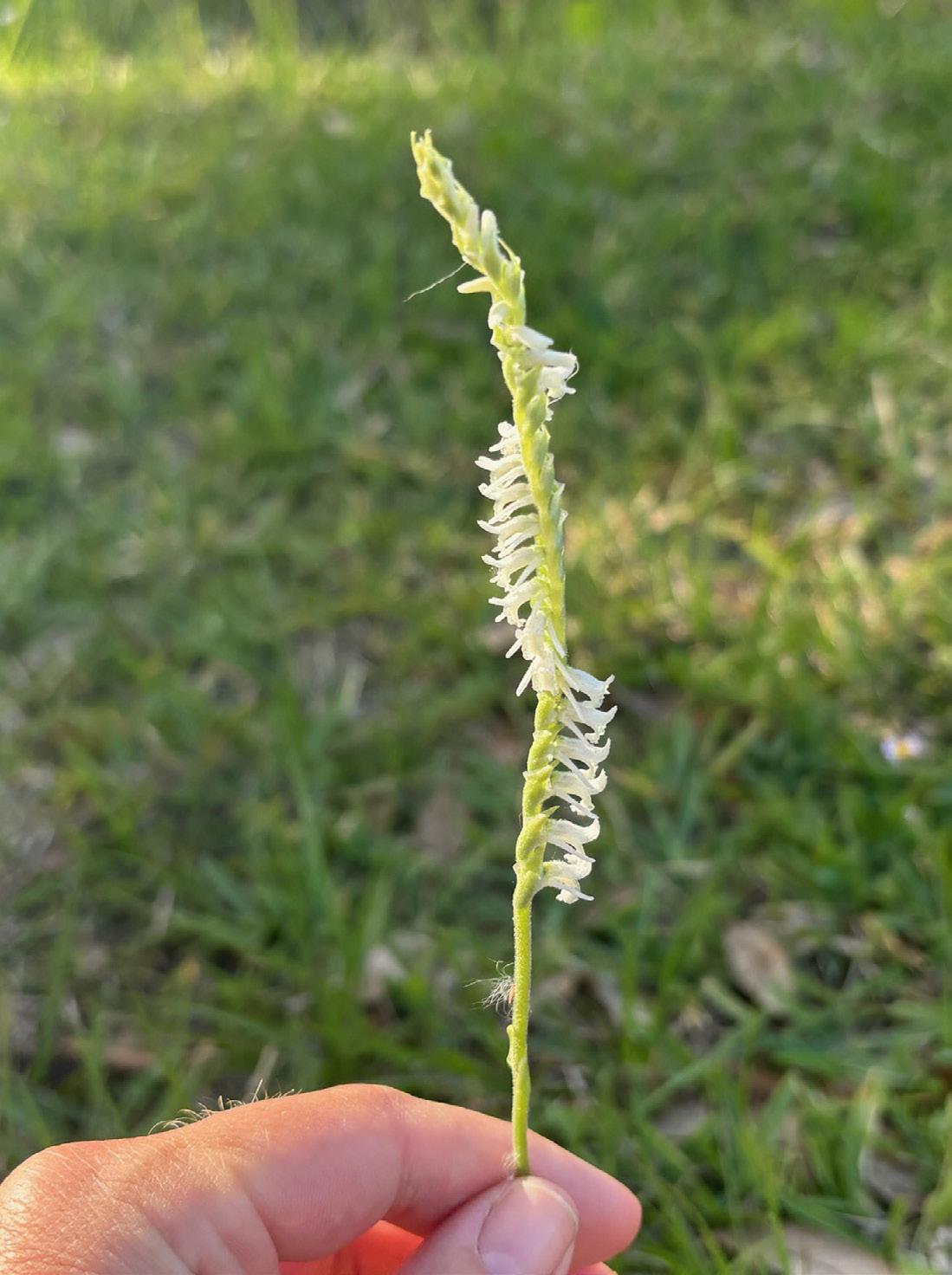
We believe that forging partnerships is crucial for success in conservation education. With this approach, we envision our city rising to prominence in the City Nature Challenge rankings in the future! Together with the support of our community, we can get more people outside enjoying and learning about the amazing plants and animals that make Northeast Florida so beautifully biodiverse.
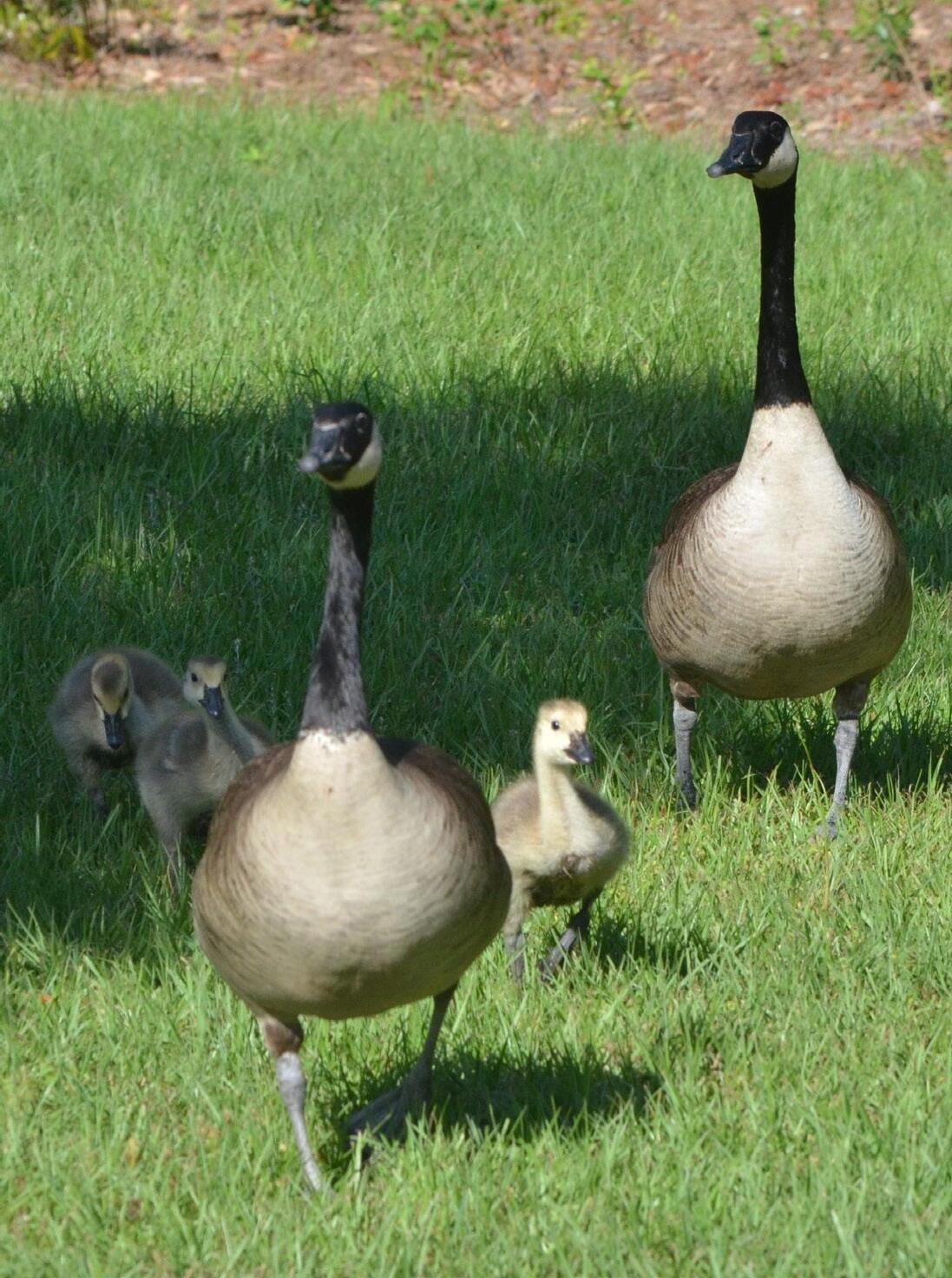
By John Reed, Photography Volunteer & Snapshot Society Instructor

Photography is all about light, but light is not just light. There are all types and nuances to the light, too many to delve into with the space I have here. So, let’s just look at one particular facet of light and that is simply direction. Since overcast days do not have a real direction to the light, the following really does not apply for days like that.
For sunny days, there are three directions for light— front, back and side. Front Light is so named because it strikes the front of the subject being photographed. It’s the way most of us were taught to shoot—“have the light coming over your shoulder.” The second type is Back Light which as you’d expect means the light is striking the back of the subject, i.e., you’re looking into
the light. The last type is lumped under the term Side Light but that’s a bit of a misnomer because it can come at any angle, and not just at right angles to the subject. Essentially, if not front or back, the light is some form of Side Light.
Front lighting presents the simplest conditions for your camera's metering systems to achieve optimal exposure, meaning you can trust the camera to do a fairly good job without having to compensate in any way. One downside is that Front Light will not do a decent job defining the shape of objects or surface textures.

Backlighting poses the greatest challenge for your camera to manage independently. This is because this type of lighting most always results in very bright and very dark areas in the same scene. Depending on the ratio of light to dark, you may end up with overexposed highlights or underexposed shadows forcing you to make a judgement call on how to compensate. Backlight however can provide overly dramatic images due to this significant difference between light and dark areas.
Side Light is somewhere in between as far as how well your camera meter will perform. Again, much will depend on how dark the shadow areas are, how bright the bright is and the ratio of one to the other. Much like Back Light, but not as severe. What’s great about Side Light is that it reveals textures and shapes. Details in fur and feathers will show up that won’t be revealed with Front Light or Back Light. It can also show much more clearly the “roundness” of a body or bone structure among other details.
Look at the photos and hopefully you can see how different the subject can appear based on the direction of the light. Then be aware of the differences the next time you shoot and match your end goal with the light present.





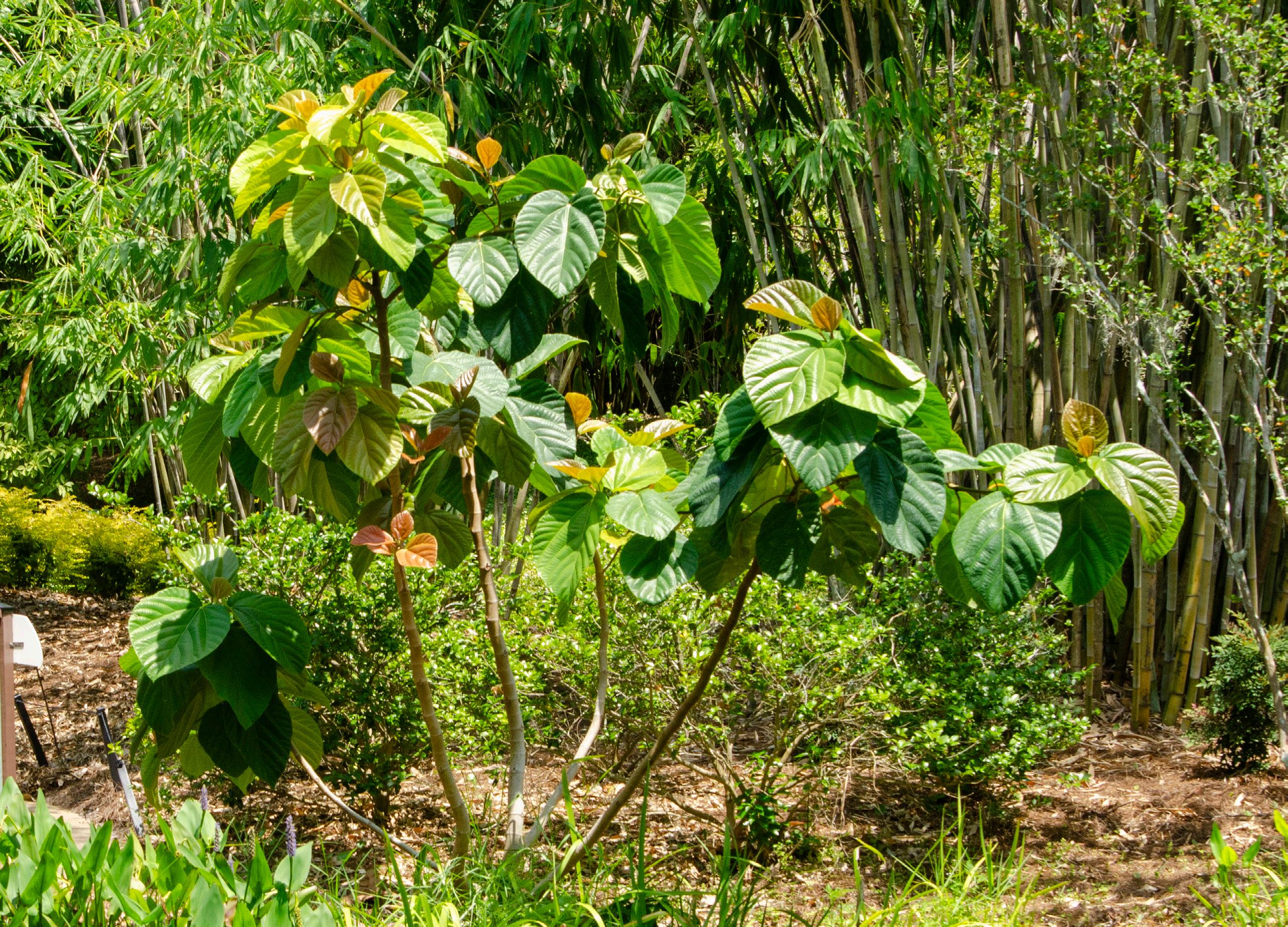
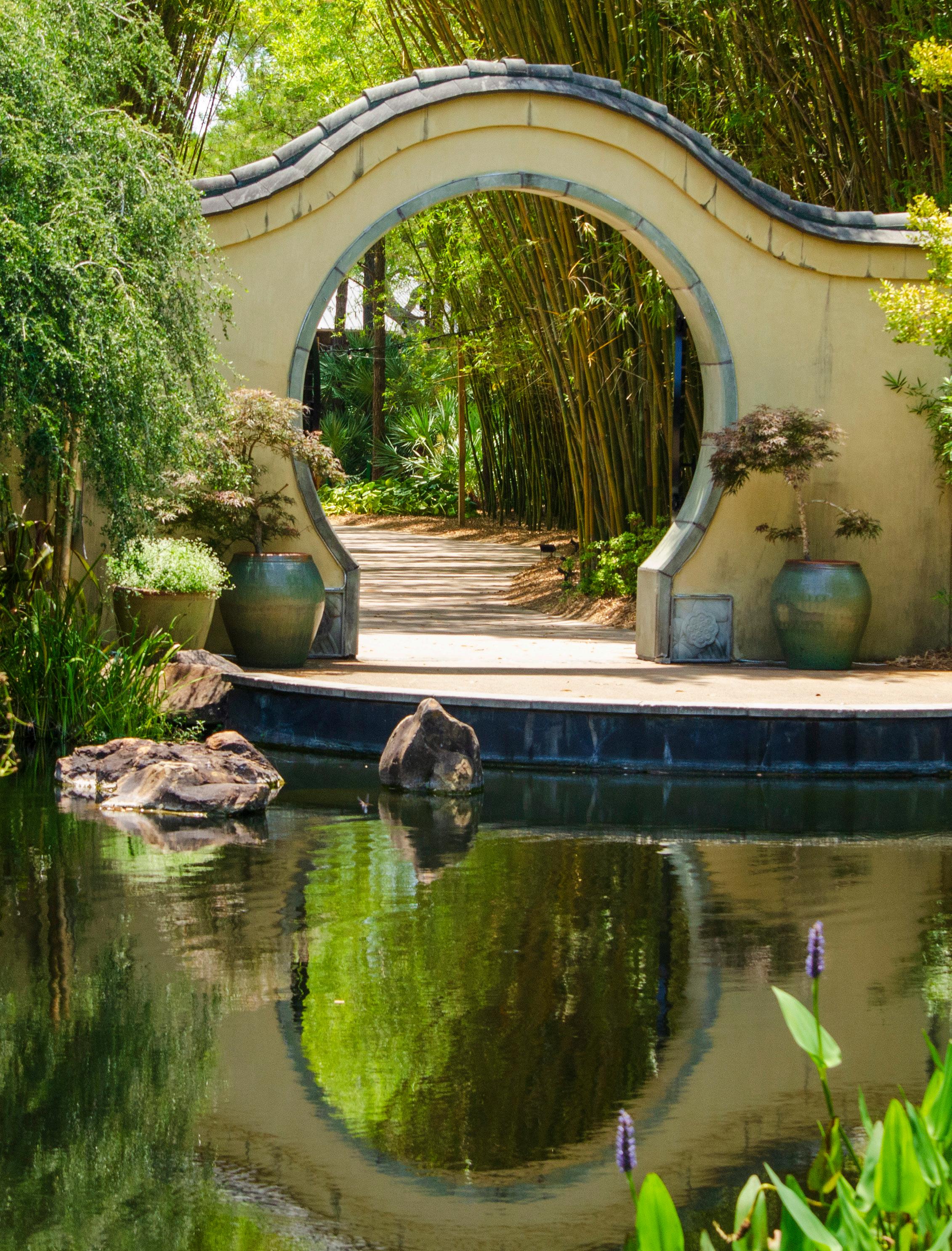
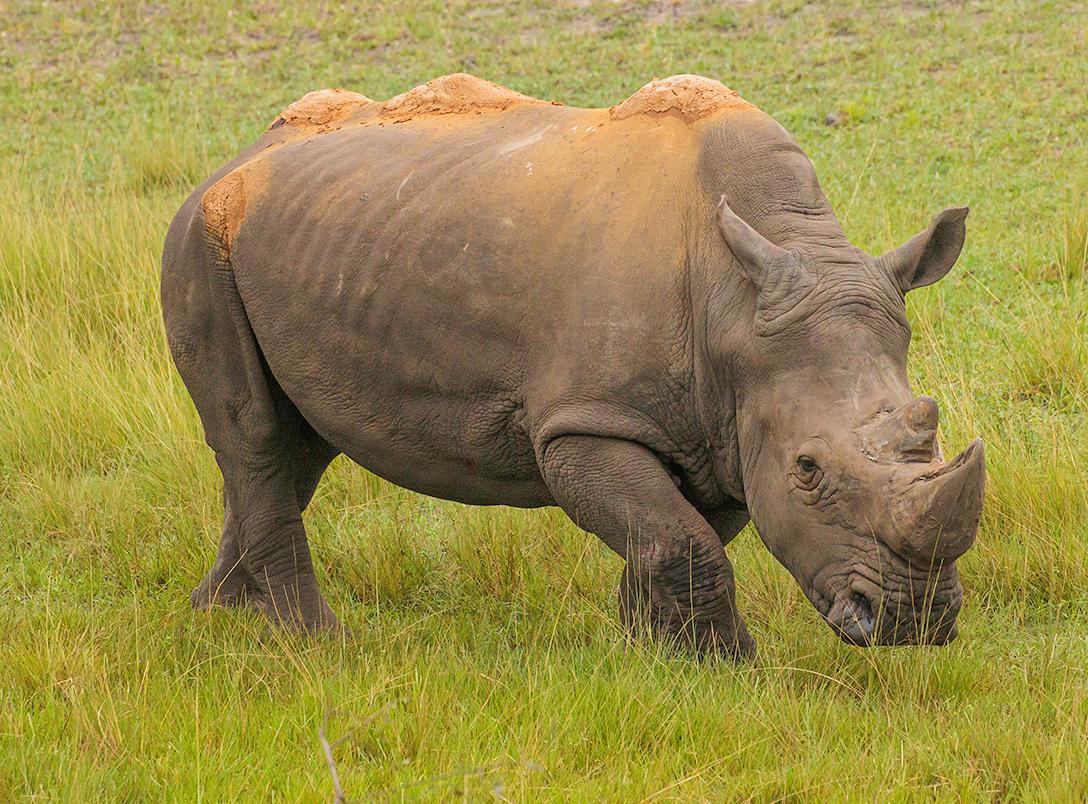
Thanks for reading Wild Magazine. See you at the Zoo and Gardens soon!
